The Stratum of the Late Gray Ware
The Iron Age began in Persia, according to our belief, during the second half of the second millennium B.C. This is solely a logical conclusion on our part, without a decisive proof. Our belief is based on the fact that during this period, that is, between about 1500 and 1200 B.C., the armies of the Hittite Empire in Anatolia were equipped with weapons of iron. They were carried beyond the borders of the peninsula into Syria and Mesopotamia in victorious campaigns, and their superiority was certainly acknowledged by the rulers of other countries.
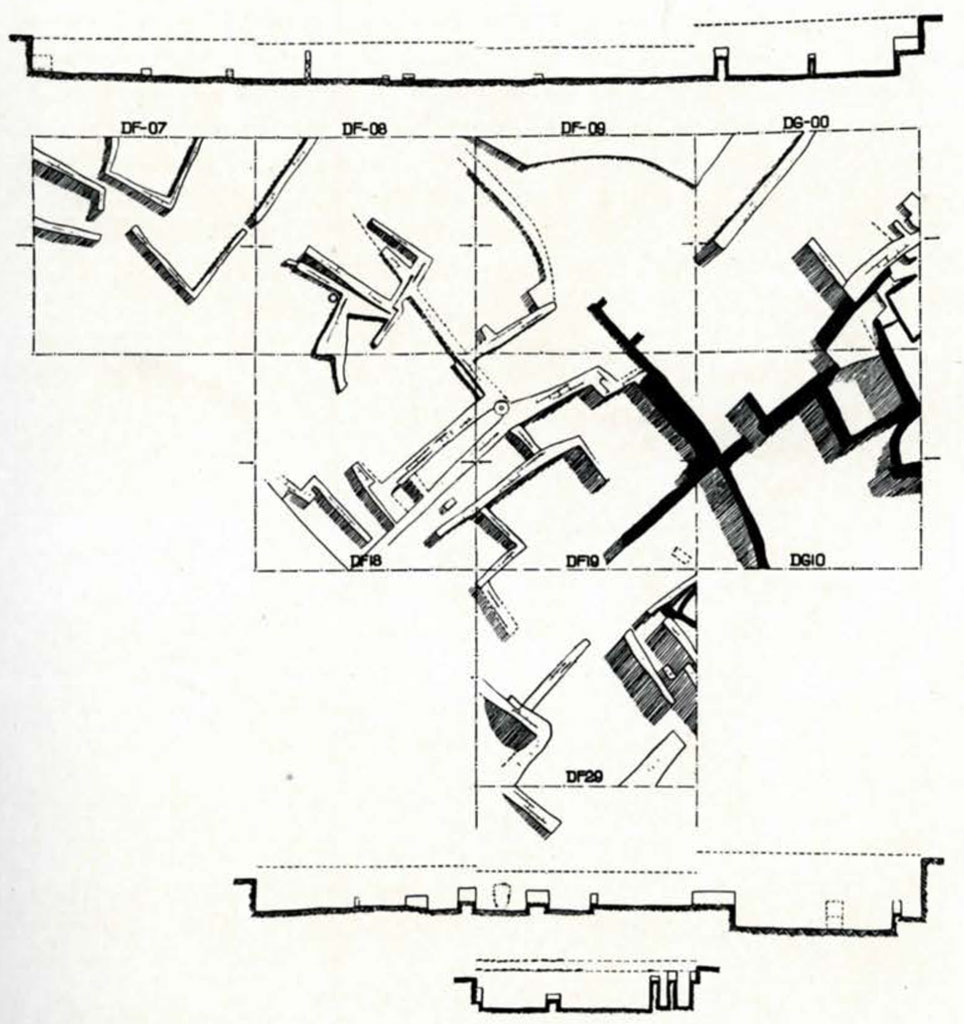
As a matter of fact, we know from an inscription that an Egyptian king demanded iron weapons from a King of Hattushash, the Hittite capital. Thus we conclude that iron implements, at least, spread rapidly over the ancient countries of the Near East, soon to be followed by actual manufacture at various points, far apart.
The active people of Hissar III had doubtless relations with the West, as we will point out at various occasions. If iron had been known in the western countries in any practical quantity, Stratum III, we are sure, would have contained objects of iron. We are, therefore, attributing Period III of Tepe Hissar to the first half of the second millennium and hope for trade objects from the west which will date the highest developed pre-historic culture of Tepe Hissar more accurately.
Period III lasted long at Tepe Hissar. There are several superimposed occupational levels and sub-levels containing the characteristic pots and other guide objects of their time; but so far we caught glimpses only of the varying fate of the Hissar III population as expressed by their structures and their graves. Again, the report on the second working season will shed more light on this absorbingly interesting period.
There are few features of the material culture in which these people did not surpass their predecessors and there are various clues suggesting that their material achievements were paralleled by elaborate mental activities as well.
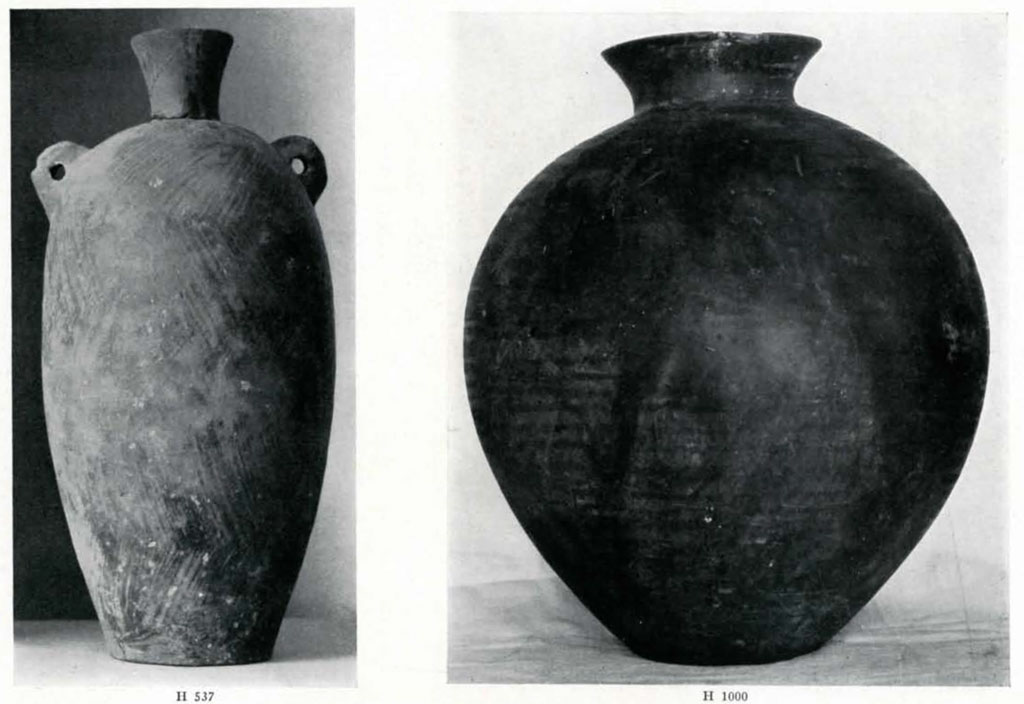
Image Number: 84814

Image Numbers: 84638, 84819, 84594
The cult objects and vessels of alabaster, sometimes exquisitely modeled, are not matched by a single find of similar nature from the earlier strata. Stratum III, only, gave us such finds as cylinder seals (probably imported), elaborate stamp seals of copper, large copper vessels, frit cups, bidents, mattocks, hollow chisels, of copper, elaborate figurines of silver, copper, and stone, a silver diadem, and composite ornaments of copper or lapis lazuli with gold.
Settlement and Building Remains of Hissar III [Plate CXII]
Stratum III was mainly investigated during the 1931 season in that section of the deposit accumulated on the main mound, but later work made it evident that it extended over most or all elevations of the site.
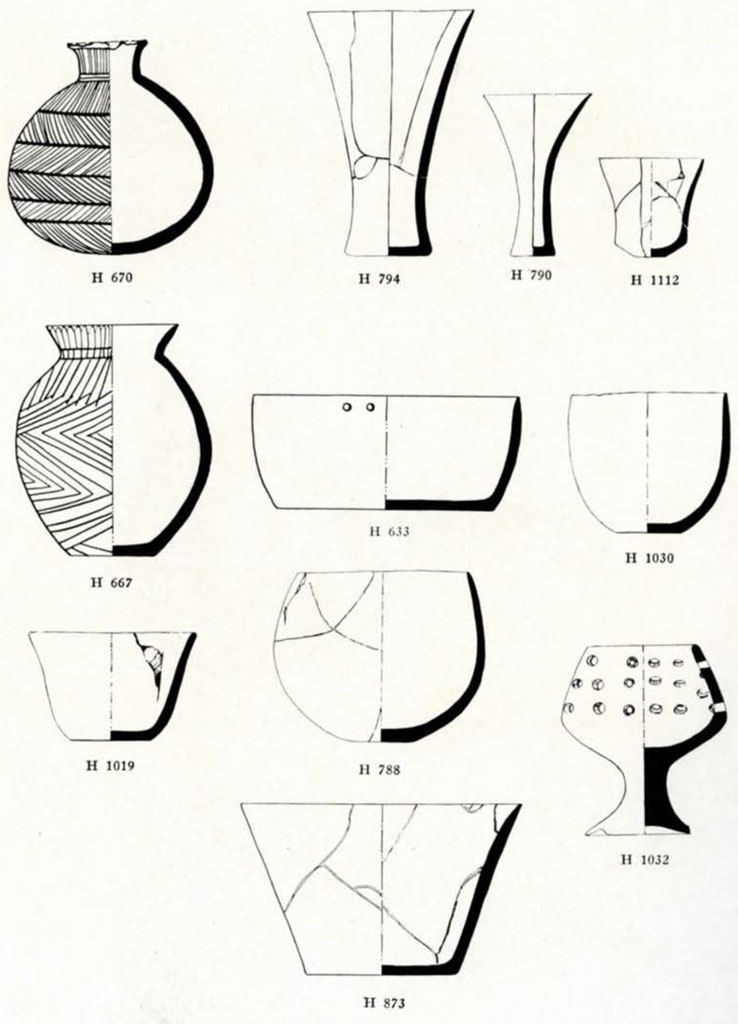
The plan of the excavated complex shows rather senseless groups of walls and wall fragments. Rooms are defined at a few spots only, while complete buildings are not traceable at all. The causes are twofold. The exposed uppermost level was almost entirely razed by die elements aided perhaps by human hands. A few low wall fragments only were left (Sub-level la). Most of the structural remains shown on the plan belong to Level 1, which was destroyed largely by the hundred and eighty burials belonging to the last phase of Period III. We shall refer to these burials in the chapter on the disposal of the Hissar III dead.
However, those parts of the lowermost occupational level (2 ), uncovered during the first season and marked in black on the plan, promised rather well-preserved building remains, which were cleared during the continuation of the work, and will be described in a more detailed manner in the final publication.
Level 1 offers no points of particular interest. There are the usual mud walls with staggered bricks, the dimensions of which, as far as traceable, are rather close to those of the Stratum II bricks.
There are clues suggesting that at least parts of Level 2 were destroyed by fire. Blackened walls and vessels, and piles of bricks burned red by the heat, are buried below the upper layer of walls and refuse. Fire is a friend of the archaeologist. It scorches objects of perishable nature and thereby preserves them for the future.
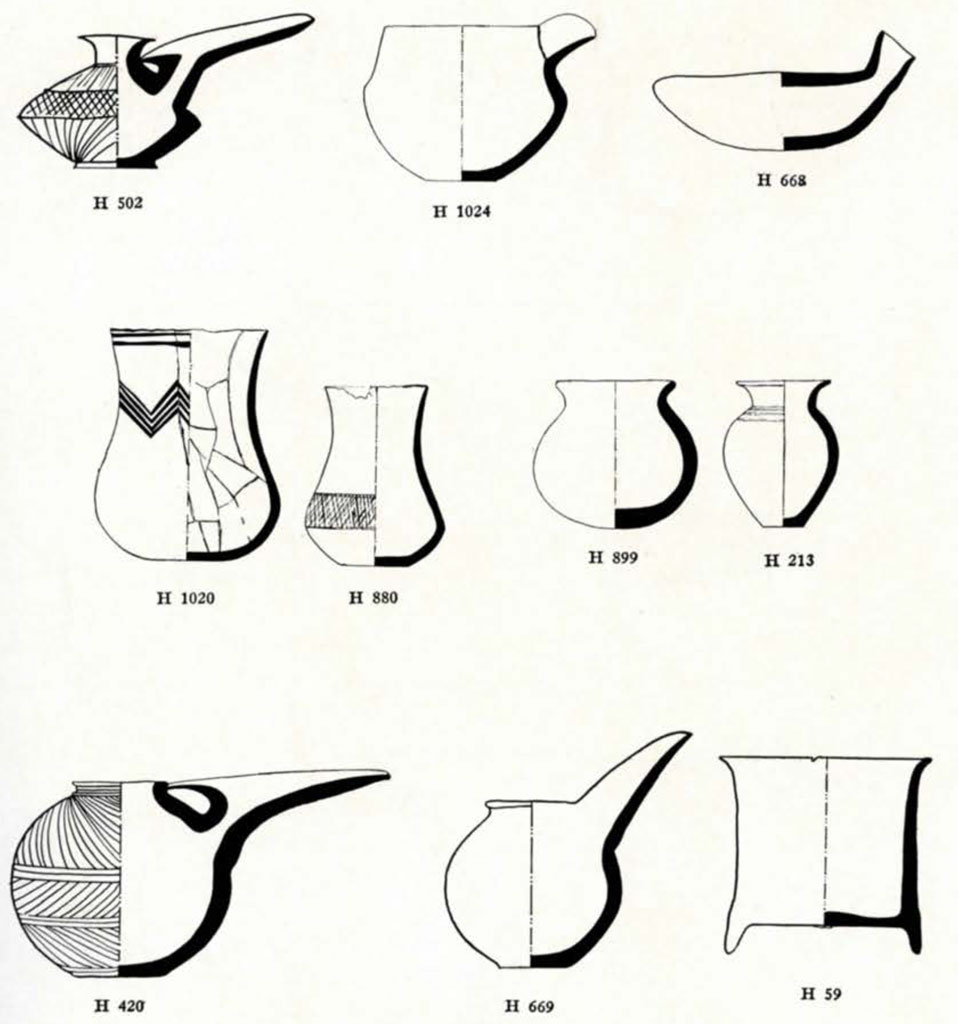
Pottery Vessels of Stratum III [Plates CXIII-CXVII]
When praising the achievements of the Hissar III people, we purposely omitted their gray pottery vessels, because we do not consider them superior to the ceramics of their predecessors. The most astonishing feature of HISSAR III pottery is the apparent loss of the wheel technique. Neither magnifying glass nor finger tips discover the wheelmarks which are so pronounced on the Hissar II and I vessels. To be sure, there are vessels with rather regular horizontal striations, but they may be marks of a wooden rubbing tool turned with uniform pressure. Again, the smoothing or polishing of the vessels usually obliterates most wheel marks, yet some series are nearly always traceable. We cannot help stating that the potter’s wheel, a decidedly practical device, apparently fell into disuse during Hissar III, otherwise far advanced in many features over the past culture periods.
One of the most typical Hissar III pot forms is the bottle pitcher [ Plate CXIV], sometimes decorated with simple burnished or incised patterns. In several cases the neck base has a marked projection, definitely suggesting derivation from metal forms, though we never found its prototype in copper. The groove thus produced weakened the neck. It often broke and was attached again by means of perforations, at either side of the fracture, connected by strings of perishable material. Again, the neckless vessels with perforated rims may simply have been used as canteens.
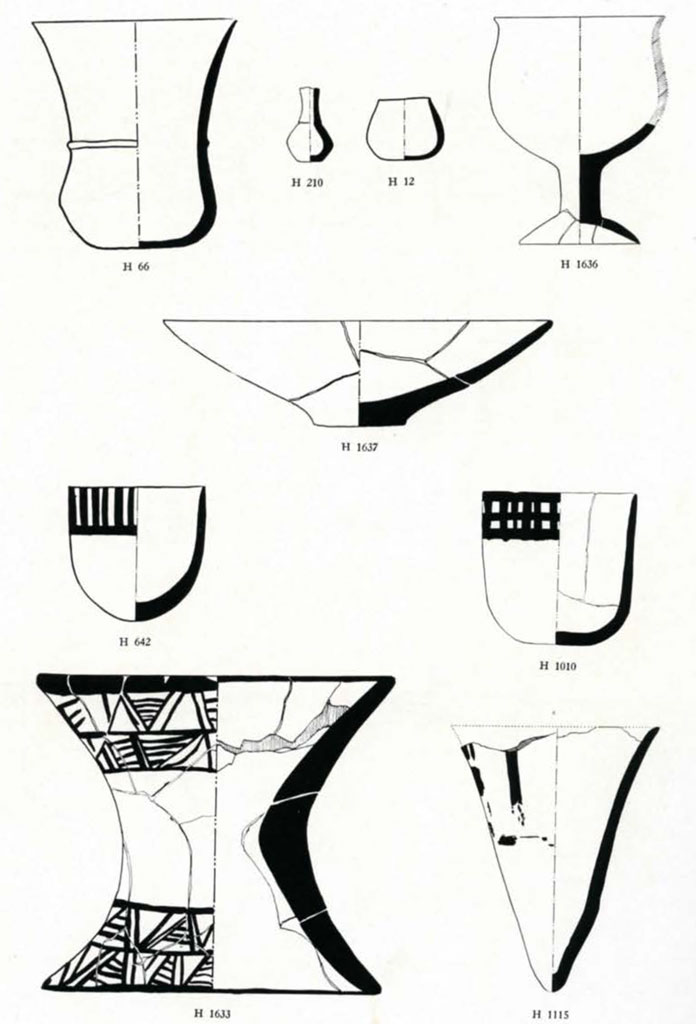
The actual canteen, also a typical Hissar III vessel, is a tall pitcher with two suspension handles and a short bottle neck, plain, or burnished with the same simple patterns, occurring on many Hissar III pots.
There are two other characteristic vessel shapes, a graceful vase cup [ H 794, Plate CXV], and a stemmed brazier or charcoal carrier with perforated walls [H 1032, Plate CXV]. As to the remaining forms we can only state that the particular vessels here illustrated were found in Stratum III. Since we noticed several of these shapes also in Stratum II, they cannot be considered characteristic for either period. In due time we will succeed in eliminating earlier and later variants.
As to cups, the almost hemispherical shape is most frequent. Cup-jars, such as H 880 and H 1020 [Plate CXVI], also occurred in many graves. The two specimens illustrated are burnished and incised, but most vessels of this shape are plain gray, as with the bulk of all Hissar III ceramics.
There are, further, large oblong jars, small jars with globular, oblong or biconoid bodies, plain, incised or burnished. Some small jars, cups or bowls have a horizontal or elevated bill spout. Specimens such as H 502 and H 420 [Plate CXVI] remind one of Luristan vessels with highly conventionalized birds’ heads as spouts. Here we must add that we found not a single bowl, cup, pitcher, or jar, in any stratum of the mound, supplied with a handle which would accommodate several fingers or the whole hand. Only holes for suspension, or grips of ladles occur.
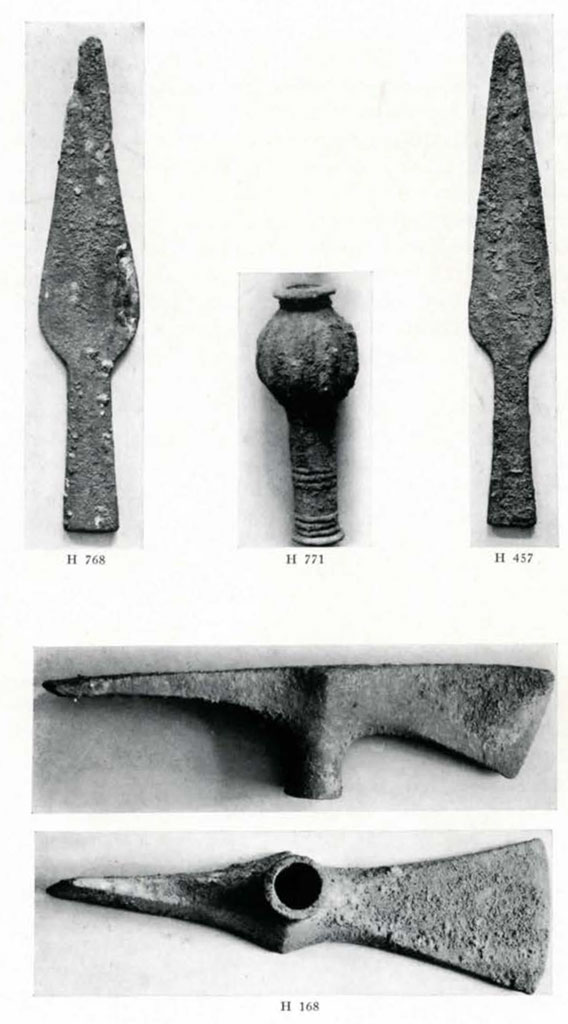
Image Numbers: 84673, 84674, 84675, 153586
Coarse vessels of bowl or jar forms (H 1388, 1026) were used as cooking pots, better wrought bowls presumably as food dishes, while tall storage jars (H 1581) held grain, water, and the like. A duck-shaped vessel and a tripod cup are unique specimens; the little bottle pitcher and cup [H 210, H 12, Plate CXVII] represent quite faithful miniature editions of the utilitarian Hissar III vessels. They are trial pots, perhaps made by small girls learning the art of their mothers.
We turn, finally, to the last four vessels on Plate CXVII which, according to their decoration or form, are entirely out of place in Stratum III. Nevertheless, the cups with red-brown, sometimes purplish lines on light brown or buff ground occur almost as frequently in the rooms and graves of Period III as the typical bottle pitchers of their time. There is little doubt that this surviving cup of Period I type had a definite, perhaps ritualistic purpose, a phenomenon well known in culture history. A pot-stand decorated purplish-brown on a light brown ground falls into the same category. It was found on the main mound in a burned room of Level 2.
Two Hissar II pots [H 1637, 1636, Plate CXVII] that strayed somehow into a grave of Stratum III, conclude this section. We are rather sure about the manner of their intrusion. They were probably found and re-used by a person of Period III. As a matter of fact, the shallow bowl (H 1637) was originally footed in the same manner as the second vessel. The fracture at the body base was neatly re-ground and the vessel served as an attractive flat bowl to its presumably secondary owner. At the same time we may mention that a mixture of Hissar II and III vessel types in the bottom deposit of Stratum III is to be expected.
Metal Objects of Stratum III [Plates CXVIII-CXXIII]
Hissar II workmanship in metal excelled over that of Hissar I. In turn, the people of Hissar III by far surpassed their predecessors in metallurgic skill and in the variety of metal products.
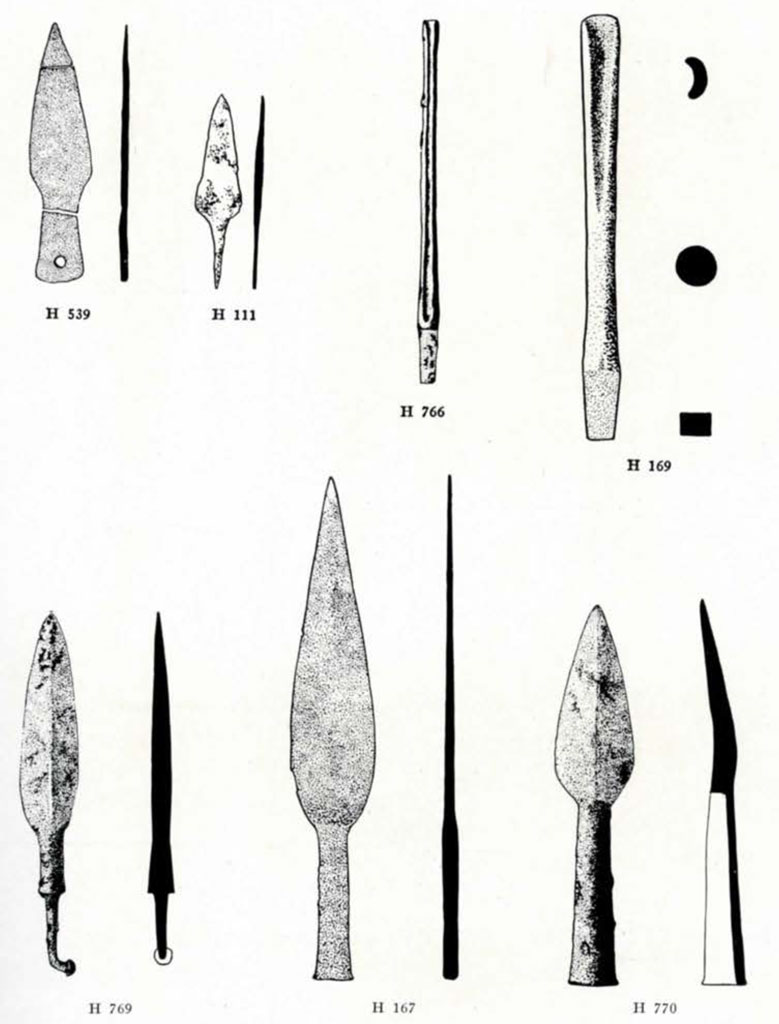
Image Number: 84689
We shall at first describe the copper weapons with which the HISSAR III warriors were once equipped. There are the bidents [H 775, H 166, Plate CXX] 1.15 and 1.297 long. Both lay in warriors’ graves. One was as undistorted and elastic as in ancient days, when its bright copper color was not yet covered by its present coating of green oxide. The second bident had been ‘killed’ by those who survived its owner. The long stem is bent and broken and the tines are twisted with great force. We are glad that this custom of killing the belongings of the dead was not carried far. It is a phenomenon known also in other parts of the ancient world. For instance, the most exquisitely decorated pottery vessels made in pre-Columbian North America are those of the Mimbres Valley in New Mexico. The vessels were usually killed by crushing the bottoms, which often carried the principal design element. To the excavator, such a custom is, of course, detestable. Returning to our bidents, we may mention that a specimen identical with the above mentioned complete bident is in the Gulestan Palace in Teheran. We were told that it had been found with the ‘Sumerian Treasure’ of Tureng Tepe. It is possible, however, that it came from Tepe Hissar together with typical pottery vessels and alabasters of our mound which are in the same collection.
Remains of the wooden stem were found inside a well-wrought mace head [H 771, Plate CXVIII and CXX]. Its principal, globular part was made more powerful by additional oblong protuberances, while series of parallel ridges ornament the tubular part.
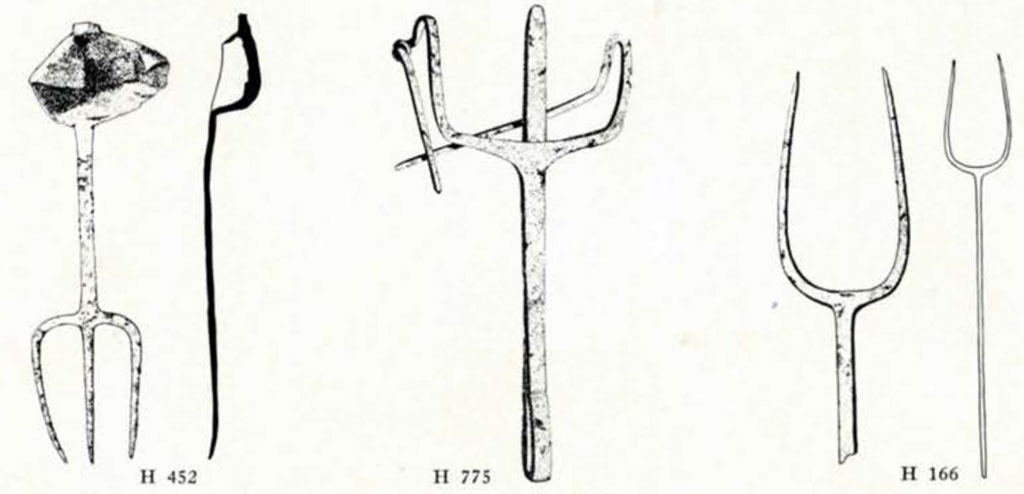
Image Number: 84676
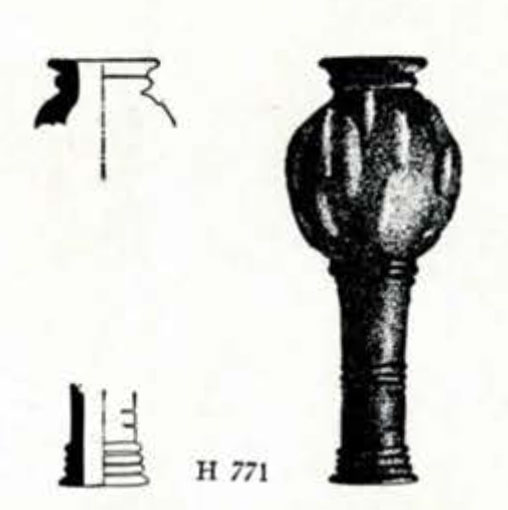
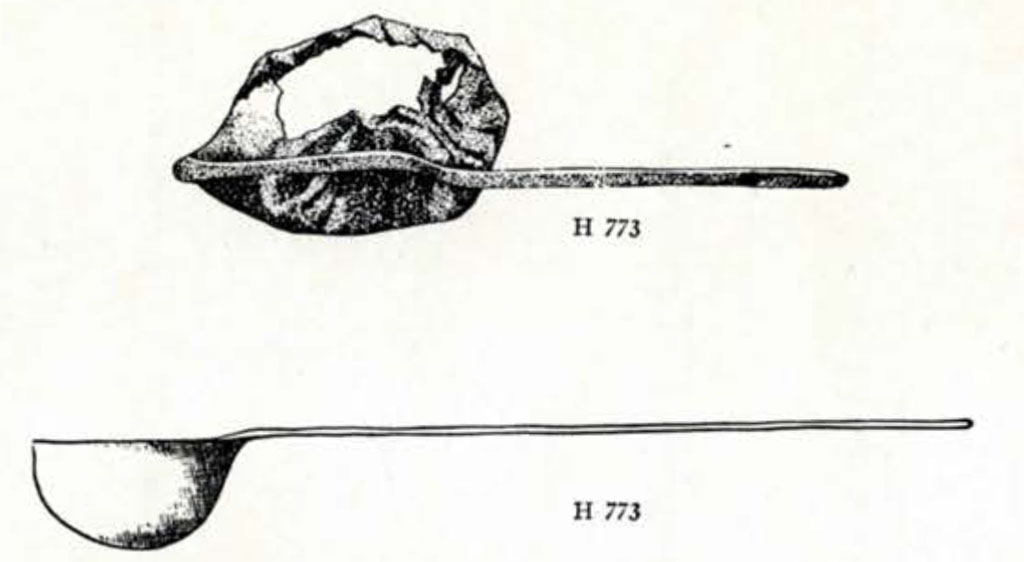
Lance or spear heads are illustrated by specimens H 769 and 770. They are socketed or stemmed with bent-over, expanding bases for fastening in the weapons’ shafts. Knives follow next. The larger ones may, of course, have been used quite efficiently as daggers. A single, copper arrow point (H 111) occurred in the top layer of the Twin Hillock. We illustrate it here since it was found in Stratum III refuse; but we believe it to be of later date. Though it seems strange, the typical arrow heads of Period III were neatly wrought stone points described in a following section.
Implements of general use include exceedingly well-wrought and socketed mattocks [H 168, Plate CXVIII] of quite modern appearance, each with an axe and an adze blade. Tools of this kind may, of course, have been used for fighting as well as for peaceful occupations. Hollow chisels (H 169 and 766) are the most elaborate samples of a series of utensils including plain, thin celts, large and small points, and nails or pins. The spoon (H 867) or stirrer rather, was found below a copper bowl in the grave of a small girl extremely well equipped with mortuary gifts.
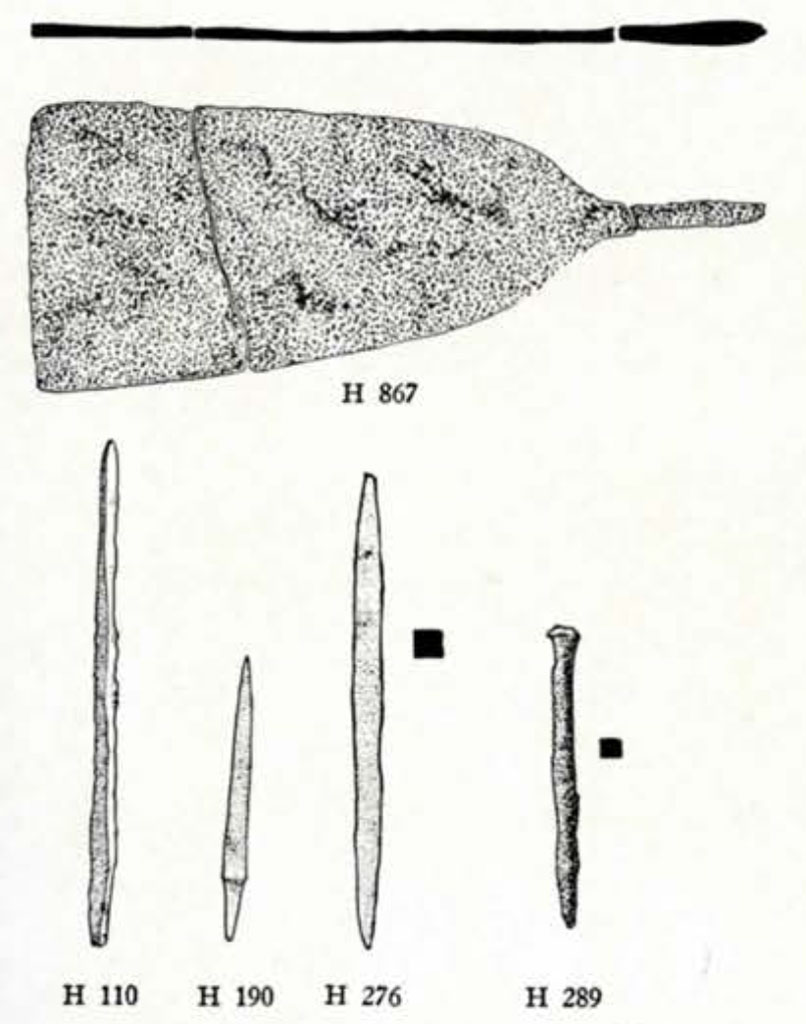
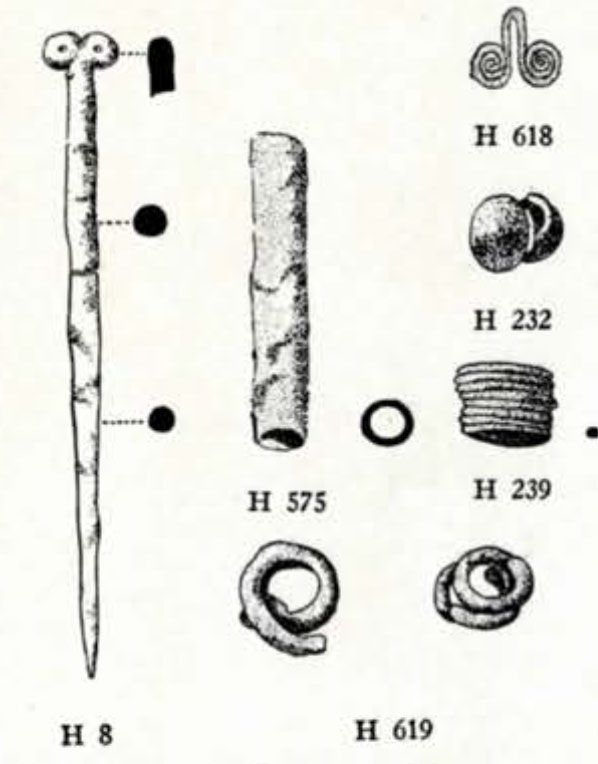

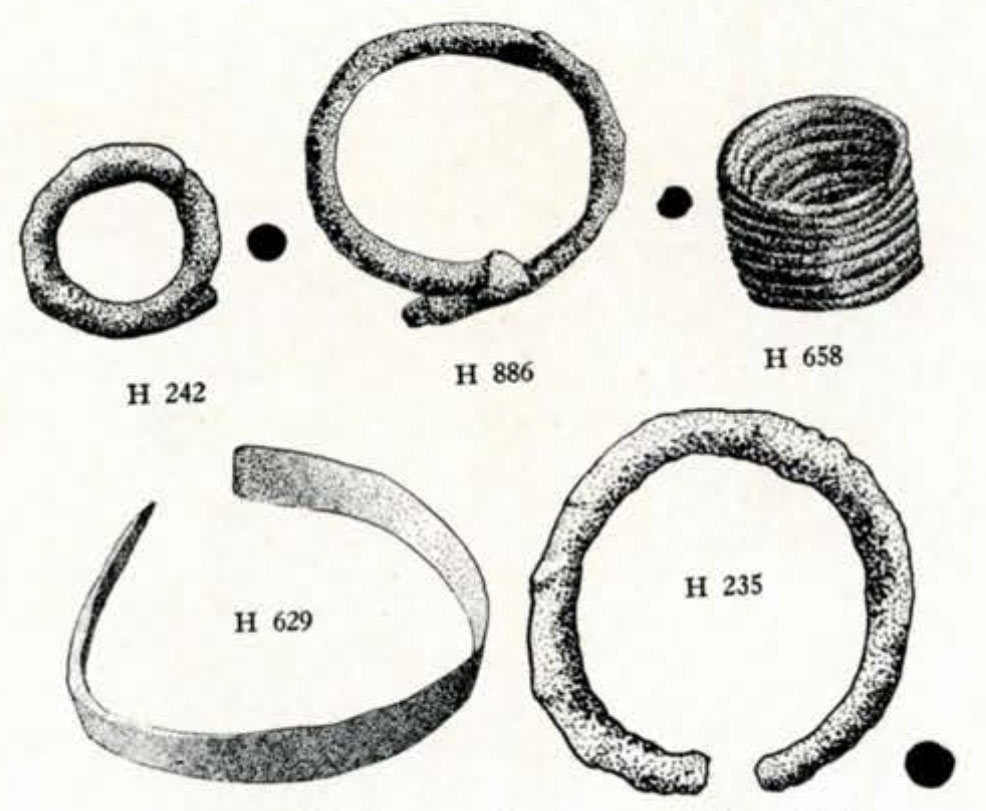
In addition to ornaments of precious metals and great varieties of beads to be described below, copper objects were extensively used for personal adornment. A large copper disk [H 451, Plate CXXIII] would have qualified as a mirror had we not found coats of fibrous matter, suggesting fine basketry work on either side. The disk was ornamented with concentric circles stippled in repoussé fashion, and the arrangement of the fibrous coating followed the pattern of the metal. The plain handle suggests use as a fan. Had this object not been found with a richly equipped male skeleton one might have been inclined to define it as an exaggerated hairpin, since it leaned against the right lower and posterior part of the skull.
The ‘fan’ is unique, while the following categories of objects are frequent: Open or coiled rings and thin bands, of sizes for children and adults, form bracelets. Small coiled rings, single or double, were used as ear pendants. Copper tubes lie frequently at the neck or on the chests of skeletons, while tacks, single or combined, may have ornamented the arms or legs. To date the finger ring illustrated is unique in Stratum III. As a matter of fact, it occurred in the lowest deposit of the stratum. The pin with double loop head and the double scroll pendant are old acquaintances from Stratum II. They may be ornaments, surviving from the earlier period, or re-used specimens.

Image Number: 84678


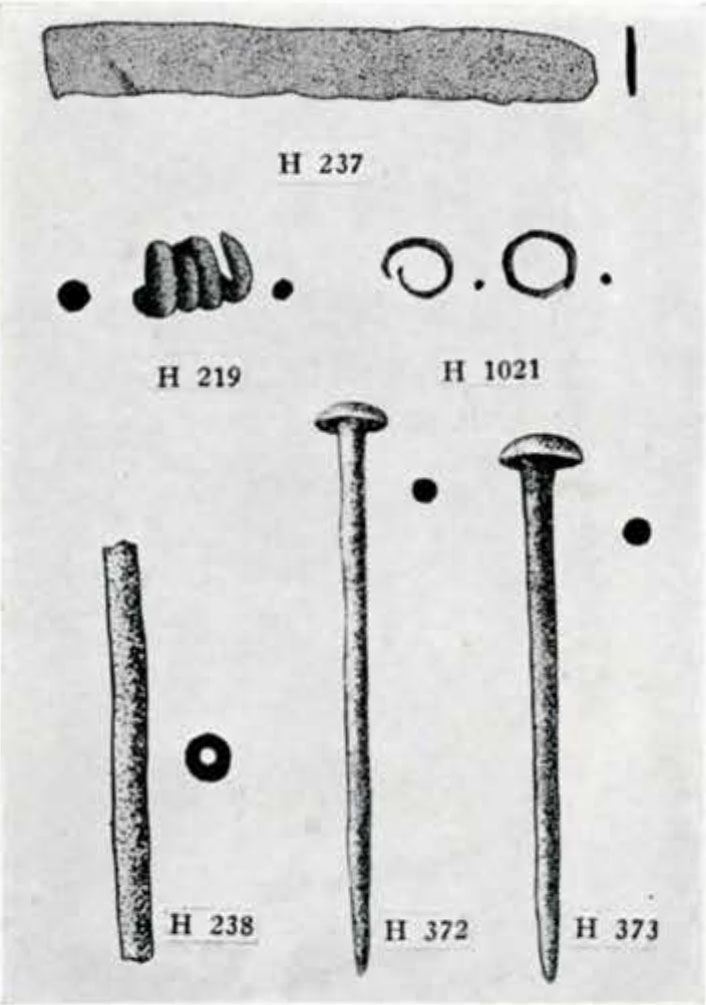
Gold and silver ornaments occurred, as a rule, in the best equipped graves only. The best sample of work in precious metals is the silver diadem [H 449, Plate CXXII] found on the forehead of the same skeleton that was equipped with the ‘fan’. In delicate repoussé work a stag, a moufflon, an ibex, and other animals, no more definable, in addition to concentric circles, are pictured in individual panels which are separated by paired rows of stipples. Both ends were certainly alike, perforated and connected by a string across the back of the head.
The silver earrings, the tube, and the band are identical with copper ornaments, while the silver pins, found on the chest of the above mentioned little girl’s skeleton, are unique.
There are several sets of gold-sheathed, copper earrings, the gold cover being rather thin, as a rule. A small, crushed gold tube and a pendant in leaf form were found in the refuse filling of rooms, while an attractive gold and lapis lazuli bead or pendant (described below) was in the little girl’s grave.
Metal Vessels [Plates CXX and CXXIII-CXXVIII]
Vessels of silver, lead and copper occurred only in the graves of the wealthiest persons. As a matter of fact, one warrior (DF 19, x-2) and the little girl (DF 18, x-1) possessed all the silver vessels found to date.
The warrior’s silver vessel was an attractive, though odd shaped, pitcher [H 173, Plate CXXIV], with globular body and a disproportionally long bill spout. As on all other silver objects, purplish gray patina had covered its surface, while greenish tints suggest impurities of the metal and an accidental admixture of some copper. All the other silver vessels illustrated [Plate CXXV] belonged to the little girl. Nearly all of the exceedingly frail, small pots are crushed by the pressure of the soil rather than by human hands, but our artist succeeded in restoring their forms theoretically.
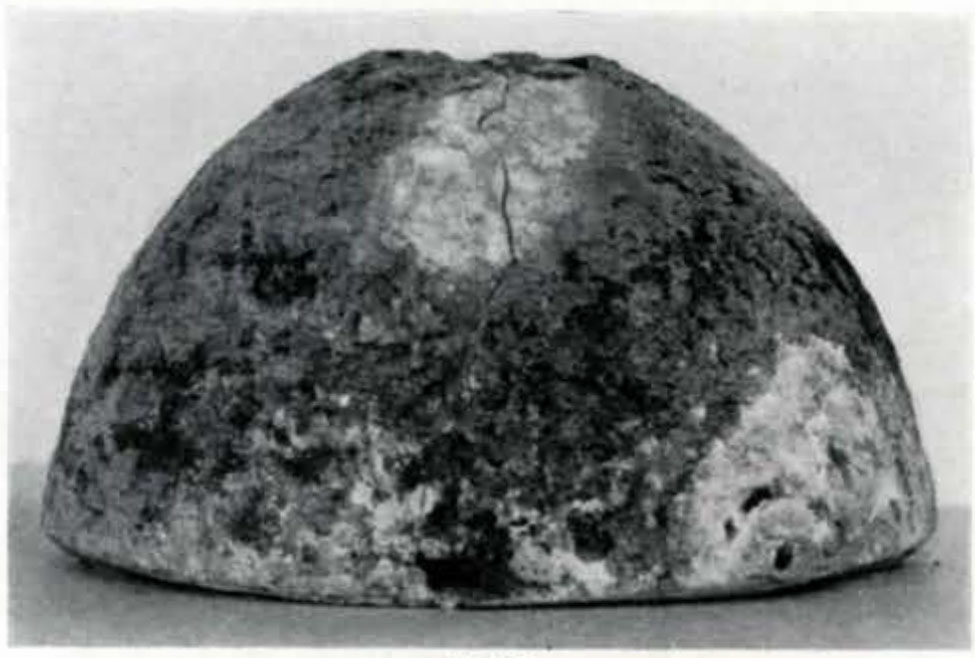

Image Numbers: 84798, 84921
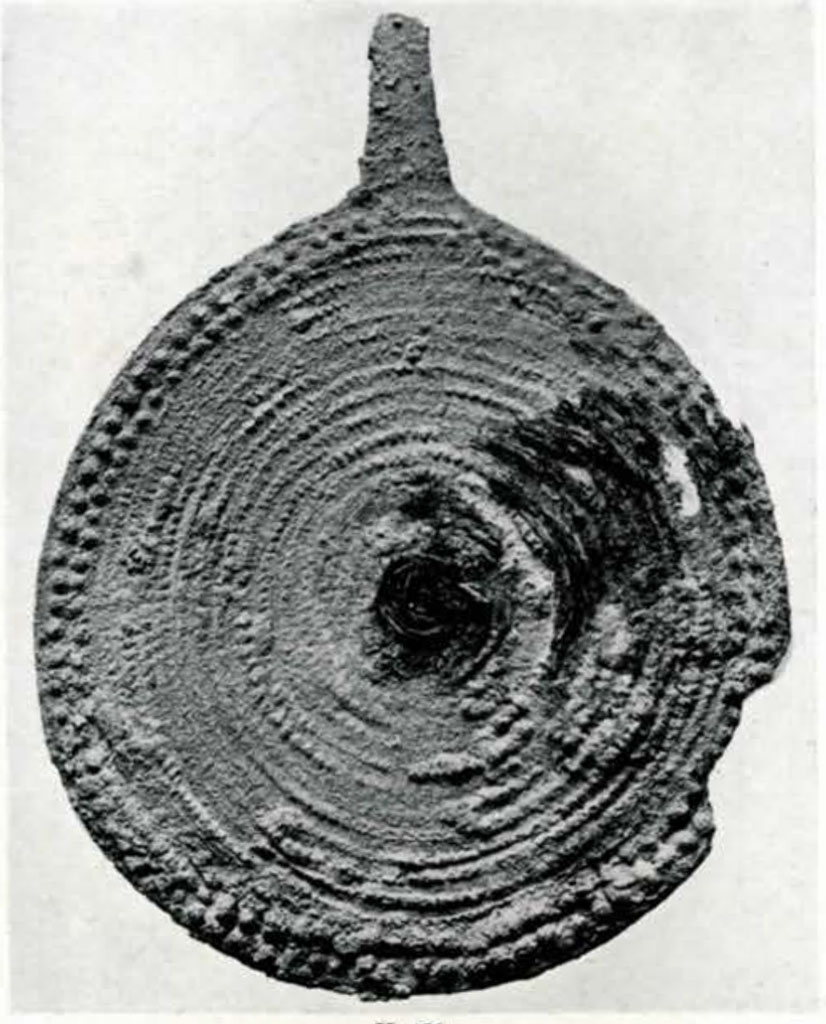
Image Number: 84704
There are small pitchers with globular or pear-shaped bodies and with bill spouts, small cups plain or with short spouts, and a biconical object open at either end.
The grayish white, lead cups [Plate CXXVI], brittle as a rule, crushed and corroded, have simple hemispherical or inverted conoidal forms.
The large thin-walled copper bowls [Plates CXXIII, CXXVII and CXXVIII] were in equally bad condition, but in several cases it was clear that they had been killed in the same manner as the above-mentioned bident. Roughly hemispherical forms prevail, but bowls with straight sides occur, while the rims are plain or bent over.
A copper object of oval form (H 171) with bent-in rim, which was accompanied by lead fragments inside and outside, roughly paralleling the contours, was tentatively identified as a helmet. It lay at the feet of a warrior (DF 19, x-2).
An interesting combined trident and ladle [H 452, Plate CXX] was probably used for culinary purposes. A ladle with long stem had been killed in the same manner as the bident and the copper bowls of the same grave. A small bottle [H 460, Plate CXXVIII] was presumably the pedestal for a copper wand to be described in the section on figurines.
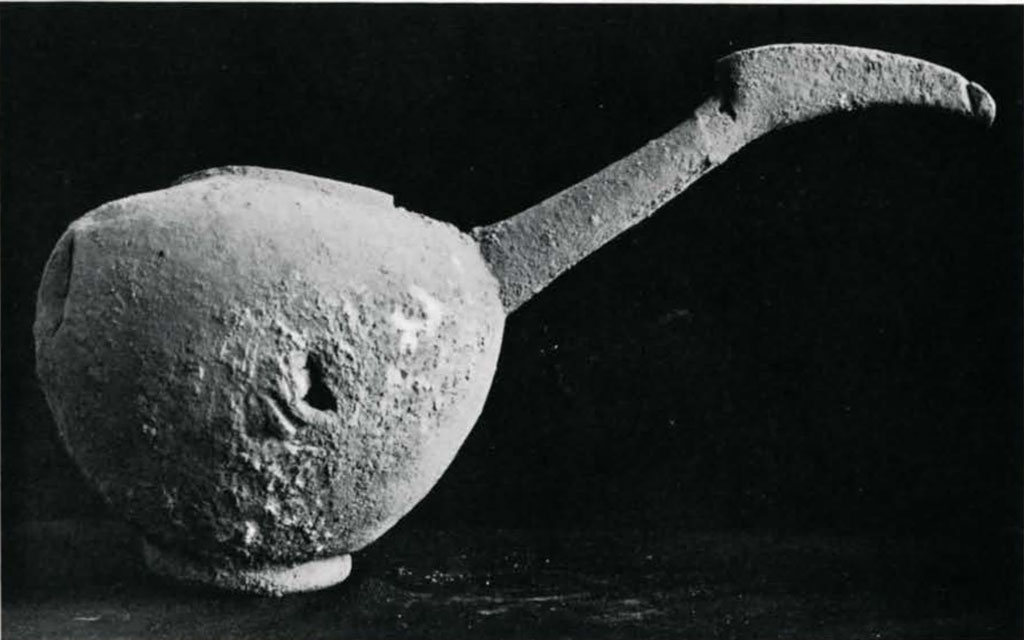
Image Number: 84519
Seals of Stratum III [Plates CXXIX and CXXX]
We do not believe that the two extremely important seal cylinders [Plate CXXX, B] are products of the glyptic art of the Hissar III people. One, made of serpentine and showing a bovine, a tree, a cross and angular elements, occurred in mixed Level 1 and 2 refuse of Stratum III, while the second cylinder, made of alabaster, was found in a grave of the upper-most level. Its sealing pattern consists apparently of a chariot carrying one person while a second person stands in front of the drawing animal, presumably a horse. Angular elements are below and above. Until comparative literature is available we can only suggest that these seals were imported from Mesopotamia. Perhaps they will help to date Period III more accurately than possible at present.
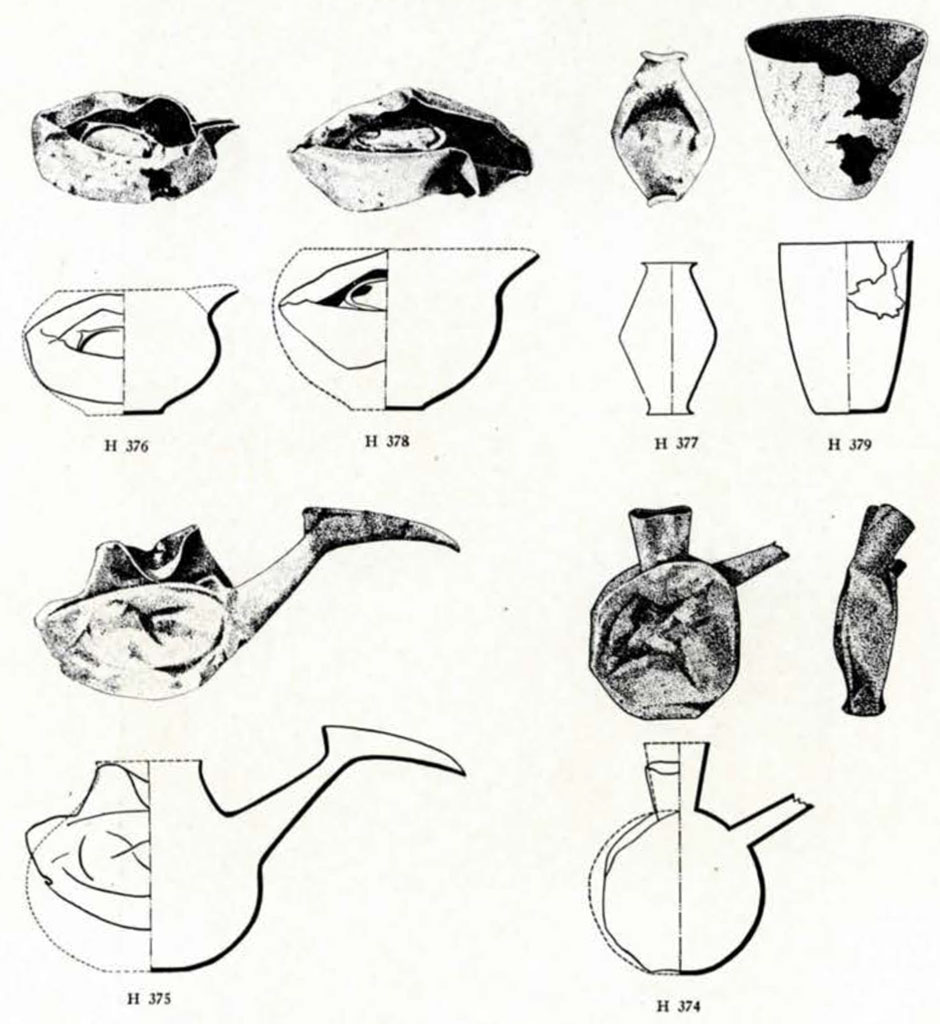
The characteristic seals of Stratum III are made of copper. They are stamp seals with rectangular or circular bases and roughly cylindrical perforated handles. Another typical variety is the ‘medallion seal’, shaped like a pendant with bilateral sealing pattern. Both types have deeply cut intricate patterns of interlocking and opposed animals. There are, further, circular alabaster stamp seals, reminding one in form and pattern of the Hissar I specimens. Concentric circles, simple or subdivided by radiating lines, form the patterns.
Hissar III Figurines [Plates CXXXI-CXXXIV]
The little sculptures of copper and silver, alabaster, serpentine and clay, reflect the artistic sense and skill of the Hissar III people. They are not matched by like products of the earlier occupants of the site.
‘Wands’ [Plate CXXXI]
The mortuary equipment of prominent persons always included a curious device which we call ‘wand’ or ‘symbol’. It is a copper rod usually ending in a bulbous base, its head being modeled in form of one or more animals or animal heads, while simple, conoid symbol heads also occur.
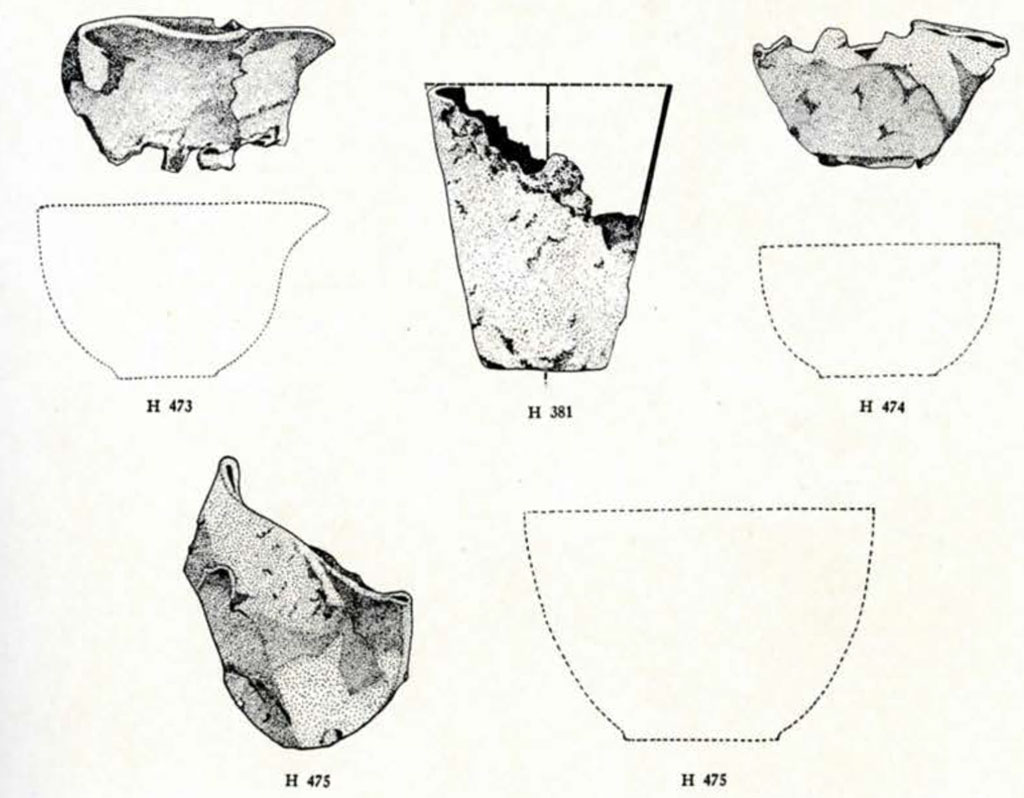
A cross-shaped wand (H 170) stood in a small jar, filled with black powdered matter, in the first warrior’s grave uncovered. The bars and the top expand into birds or in animal heads. The second warrior’s symbol was a short rod ending in two horned animal heads. In front of the chest of the repeatedly mentioned little girl lay a symbol with a well wrought ram, while a ‘priest’, so called by us on account of some unusual gifts, had two objects of this nature. The head of H 463 seems to consist of two figures not identifiable before expert cleaning. The second wand ( H 461) is fragmentary and corroded. It lay beside a little copper bottle (H 460), described above, with an orifice just large enough to accommodate the rod. A double-headed ram decorated another wand ( H 550) while two plain specimens with simple expanding heads conclude the series of these interesting objects. We are convinced that many of the beautiful metal sculptures from Luristan served identical purposes, though the meaning of the symbolism is still rather vague to us. Sometime we may find proof whether these wands are personal, family, or group symbols, badges of office, or the like.
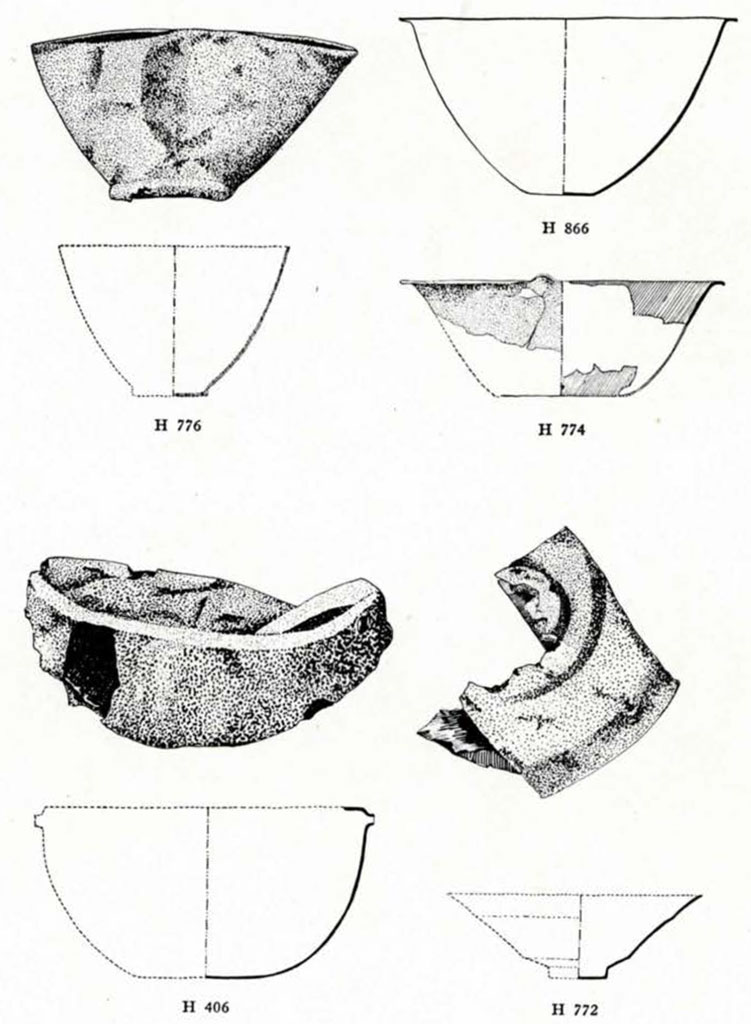
Human Effigies [Plate CXXXII and CXXXIV, A]
The human form was represented in a highly conventionalized and stereotyped fashion only. At the same time it is obvious that all figurines falling into the class under consideration, represent females, judging by the pronounced breasts of the alabaster figurine, H 482. Perhaps we can see here again the widely distributed idea of fertility symbolized by woman.
The alabaster effigy was in the grave of the ‘priest’. A perforation for suspension extends from the top of the head to its back. A small silver pendant (H 491) of similar form, with breasts faintly marked and with a bird on either shoulder, lay among the ‘priest’s’ numerous ornaments. A silver figurine (H 379) with stippled repoussé work was beside the little girl’s head, while copper figurine H 576 was in the grave of an adult man.
A copper object (H 563) of odd form may also fall into this category, though we are uncertain about its meaning. But for the resemblance to the somewhat less conventionalized metal figurines we would hardly be justified in considering the gray brown clay object (H 87), shown in Plate CXXXIV, a human effigy. Head and arms are marked by pointed stumps and the cylindrical body rests on a circular base.
Animal Figurines [Plates CXXXIII and CXXXIV]
Two silver figurines, suggesting a cow and a sheep, were at the little girl’s chest. Both have collars, a fact which does not quite agree with the identification of the larger figurines, but it does not absolutely contradict it. A double-headed ram of copper was in the second warrior’s grave, while a small dog (H 362) was found in the refuse of the upper level of Stratum III.
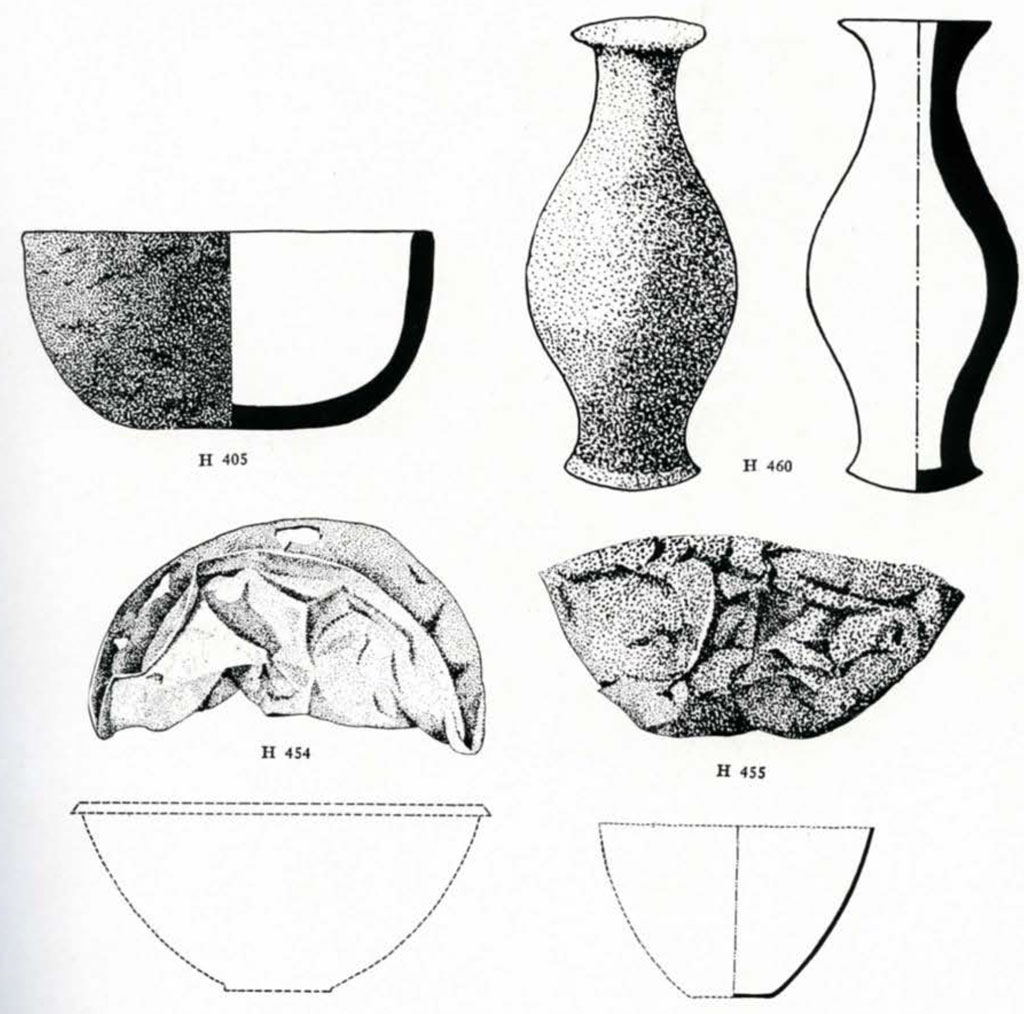
The ram with two heads, or the double-headed, horned animal in general, seems to have expressed a favorite symbolism of the Hissar HI people. As a rule, the horn symbol implies great strength or power. The ‘priest’ was accompanied by two small, double-headed and two normal, miniature rams of serpentine, with vertical perforations for suspension.
A delightful array of small animal sculptures rested in the grave of the second warrior (DF 09, x-1). Six series of four almost identical animals were spread beside the bundled up weapons of the dead warrior. Four series, representing horse, tiger, bear and lien, are modeled of alabaster, while dog and raven( ?) are made of unbaked, gray clay. Little alabaster pellets, scattered about, and one actually beside and partly below an alabaster lien, suggest eggs, an amusing thought.
Fur, wings, beak, eyes, and on the horse perhaps the harness, are marked on the alabaster figurines by incised lines and centered circles, with black or red incrustations. One clay figurine of the dog series resembles a chipmunk or a fox rather than a dog, while the ‘ravens’ may actually represent any similar birds.
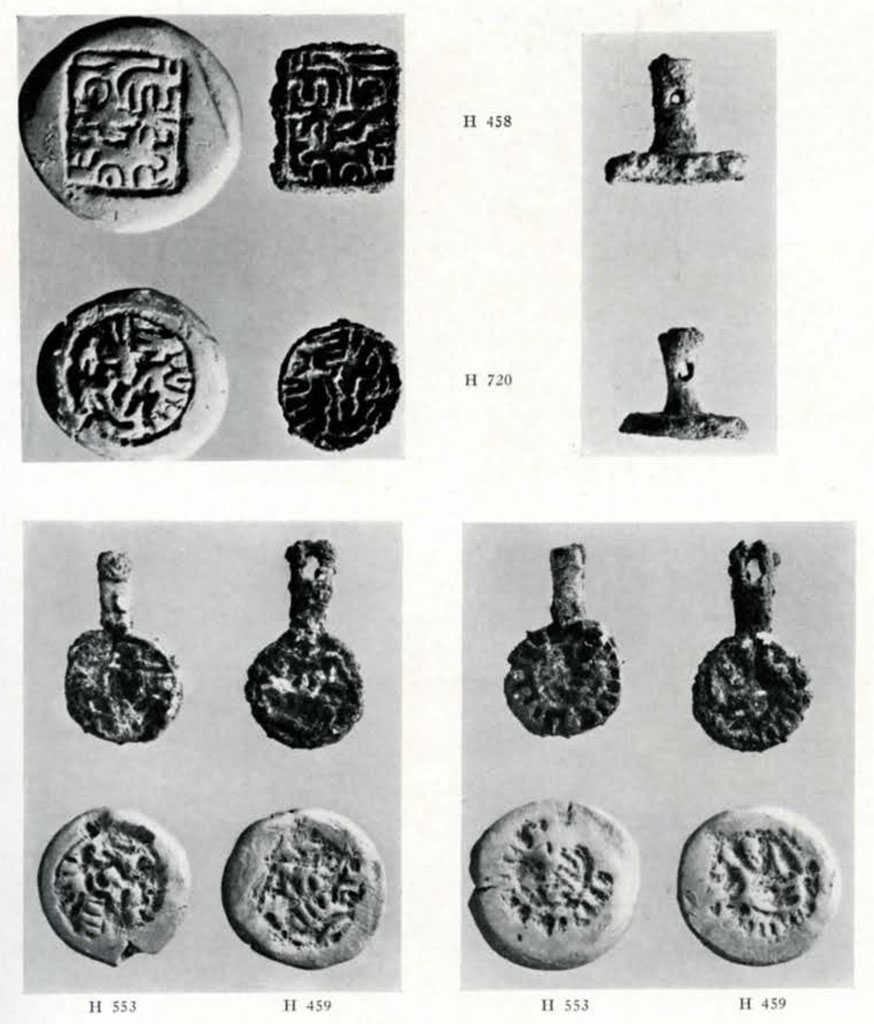
Image Number: 84911, 84912, 153923
In addition to the outstanding types of Hissar III figurines, the usual numbers of simple little clay animals occur which are about alike in all strata. We illustrate a few only: an exceptionally well modeled goat ( H 23), a sheep (?) (H 416) with a series of depressions at the left side for attachment to some device, a freak figurine (H 201) suggesting a sleeping animal but probably an accidental ‘artistic’ creation due to squashing of the soft clay, and, finally an effigy spout representing a horned animal and promising the occurrence of interesting effigy vessels.
We mentioned in the chapter on Hissar I figurines that we believe in the magical purpose of the small animal effigies of Tepe Hissar. The Hissar III groups of figurines, particularly the warrior’s ‘game’ and ‘livestock’, support this belief to a considerable extent.
Hissar III Vessels and Cult Objects of Stone [Plates CXXXV-CXLI]
We assume spontaneous western, that is, probably Mesopotamian, influence in the fact that during the last prehistoric period at Tepe Hissar suddenly stone vessels (mainly of alabaster and some of limestone) of highly elaborated forms appear, while in Mesopotamia stone vessels had been extensively employed for more than a millennium. Comparative studies will perhaps determine the accurate focus of diffusion of this and other foreign features of Period III.

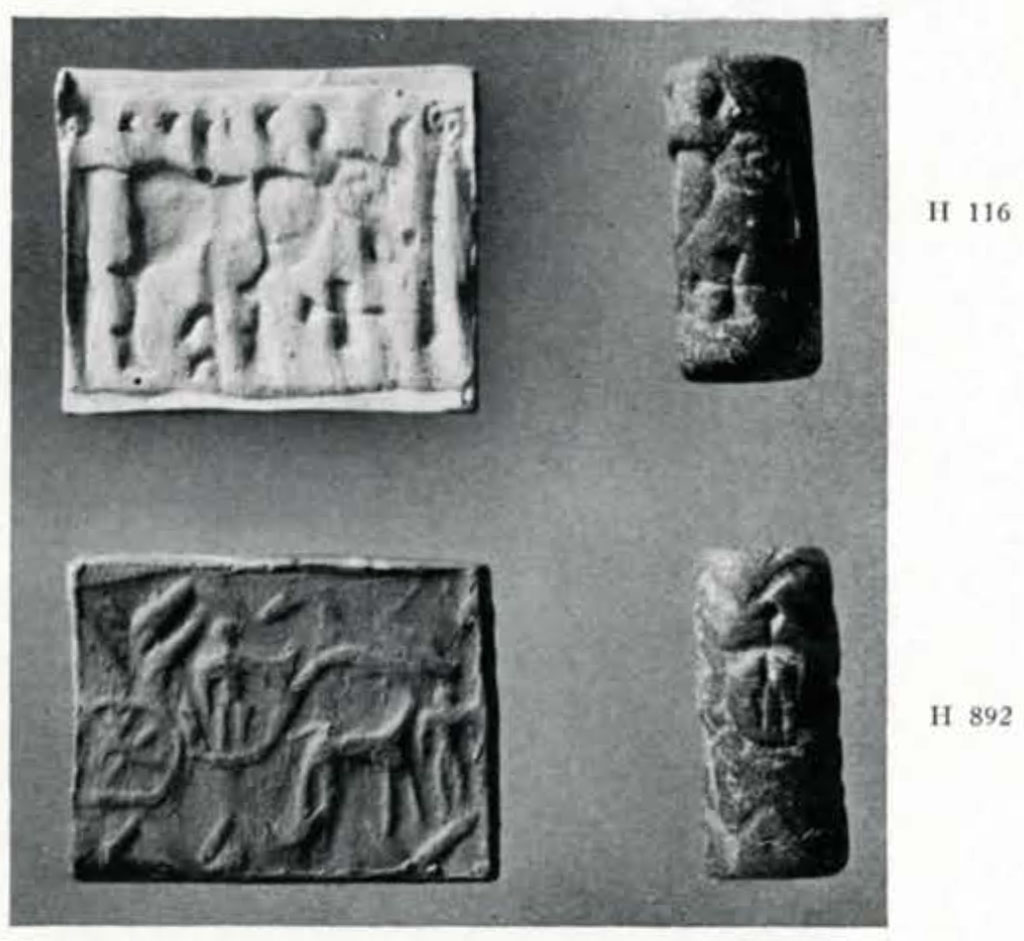
Image Number: 84904
An elegant alabaster ‘fruit plate’ (H 176) lay in the first warrior’s grave. A groove encircles the side of the shallow, discoid top resting on a tall stem with hollow, conoid base. Shorter and less graceful variants of this type occur, in addition to footless plates, one of them being perforated through the center (H 1665).
Several jars with graceful, oval bodies and discoid rims (for example, H 536) and smaller, cruder jars with roughly globular bodies were found in the graves of the wealthy. Alabaster vessels in general were as much a sign of wealth as the large copper vessels above described.
The most delightful vessels are two little ‘cosmetic jars’ found in the grave of the little girl. Black incrusted concentric circles ornament the body and the conical lid. For attachment, two perforations in the lids correspond to two holes at the rims of the vessels. An unusual, small jar (H 483) is also decorated with concentric circles and dots incrusted red and black.
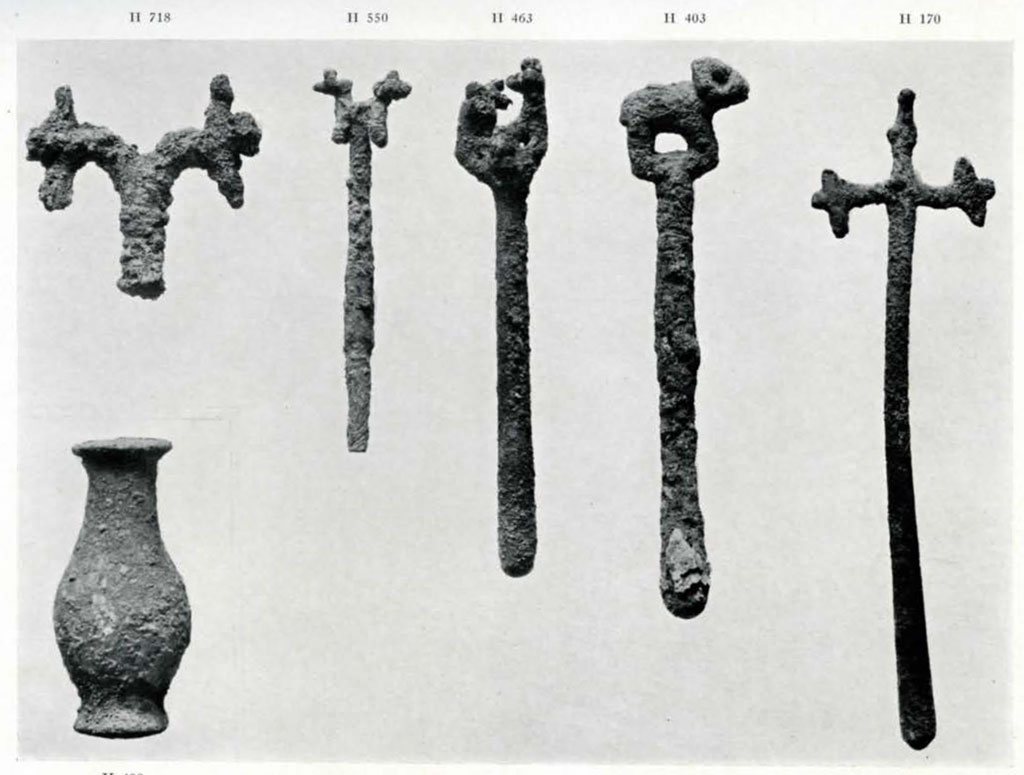
Image Number: 84743
There are quite a number of cup-shaped vessels (for example, H 549) with expanding, discoid rims and bases and roughly cylindrical bodies. Small bowls (H 57) with short bill spouts and cups with hemispherical or oval bodies and solid disk bases show in some cases the attractive banded or dotted pattern of the translucent alabaster. Alabaster cups of inverted conoidal form (H 184) are common, but a cup from the little girl’s grave is wrought of fine-grained, greenish gray and banded stone (H 391). A badly crushed small cup with terraced wall is unique.
We cannot help calling the two alabaster specimens H 174, H 175, cult objects for it is difficult to imagine their utilitarian purpose [Plate CXXXVI]. Both lay side by side in the first warrior’s grave. One is a smooth concave cylinder (H 175) with a shallow diametrical groove across either base, ending in rectangular depressions which are cut out of the margins. Two small holes are drilled in one such groove and suggest the attachment of some other device. The second object is a smooth disk (H 174) with a grip. Standing vertically, this ‘shield’ fits into the grooves of the before mentioned cylinder. We must admit that we have no plausible explanation for the use of these objects.
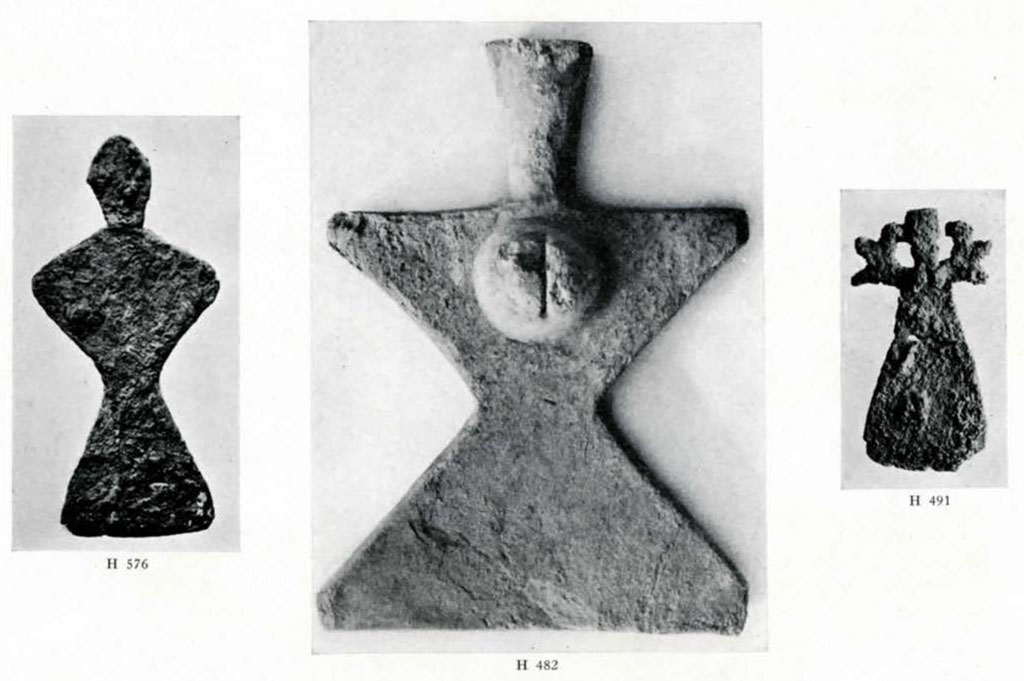
Image Number: 84741
Frit Vessels [Figure C]
All three frit vessels, found to date, belonged to the little girl, whose grave furnished an extraordinary amount of information. A small jar (H 385) with granulate surface, shaded iridescent light brown and grayish white, has an incised pattern of simple angles and branches. Two identical cups (H 382, 383) have patches of silvery iridescence on the exterior, while the interior shows green, glazy stains.
Miscellaneous Stone Objects of Stratum III [Plates CXLII and CXLIII, A]
The range of stone objects stays about the same as in the preceding strata. There are numerous polishing stones, chalcedony flakes with plain or serrated edges, small globes of ordinary stone or of haematite, several celts, hand grinders and mullers (H 1113), ring weights (H 323), small perforated stones and the like. A series of chalcedony and bone (H 724, 726) arrow heads are interesting. They were bundled up in the second warrior’s grave together with his copper dagger and spear heads. Traces of the wooden arrow shafts, at least .45 long were still faintly marked. While these arrow heads are stemmed and partly supplied with
tangs, a slender obsidian point (H 606) has a plain, slightly incurved base. Lanceolate or ovate heads without stems occur, too. A conoid the influence of time. Metal ornaments of copper, silver and gold have been described above.
The little girl had the most striking ornaments [Plates CXLIV and CXLV, A]. At the forehead, perhaps actually worn there or in the hair, was a large, oval chalcedony pendant, light gray and milky blue, a con-ical alabaster bead, and a large lapis lazuli tube, its dark blue color interchanging with rings of gold leaf. The necklace consisted of large and small, oval and oblong chalcedony beads with dark brown, bluish white and red-brown shades; further, tubular, oblong, and diamond-shaped lapis lazuli units; tubular, oblong, biconoid and by-pyramidal carnelian beads of brown-red color, two being decorated with white incrusted (?), incised circles. There were, further, single pendants or beads of shell, turquoise, frit and copper, and a globular and a biconical bead of lime-stone. Not far from the skull was a rectangular frit collector with two perforations, and on the chest rested a string of small, white and light green frit rings, oblong and barrel-shaped alabaster beads, common stone disks and a second collector of alabaster.
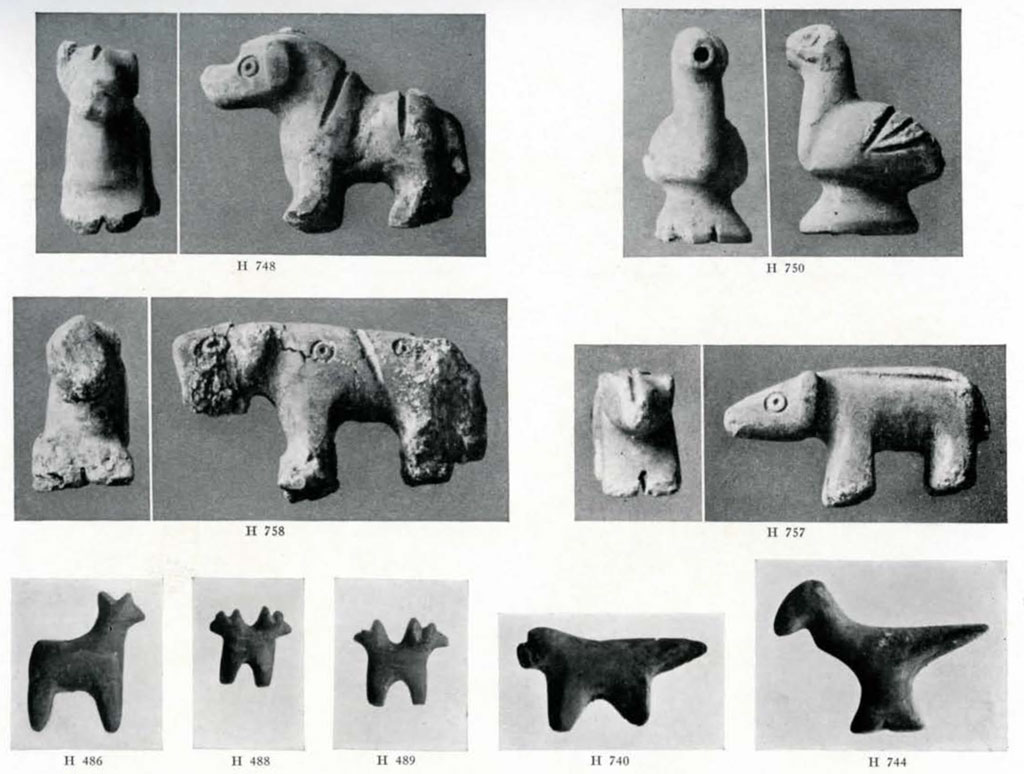
Image Number: 153365, 153906
The ‘priest’s’ necklace was composed of rings, disks, and oblong beads of gold-brown amber; oblong chalcedony beads banded brown and gray-ish white; grayish green, serpentine cones; dark blue, oblong lapis lazuli beads; natural perforated shells with brown shades; and a brown tube of common stone. His belt [Plates CXLV, B and c; CXLVI, A] consisted of great numbers and varieties of beads. Most important are segmented or plain frit tubes, and a little alabaster pendant, shaped like the conventionalized female effigies. Bi-cones of frit and alabaster, the latter decorated with black incrusted centered circles, and serpentine cones may have formed a separate string. Great numbers of frit and amber units were perhaps combined on a piece of beaded fabric pulled through two copper bracelets, which were virtually filled with solid lumps of beads
These two groups of personal adornment suffice as samples. They include the principal types of ornaments of all Hissar III people, in addition to some units not occurring in the graves of the commoners.
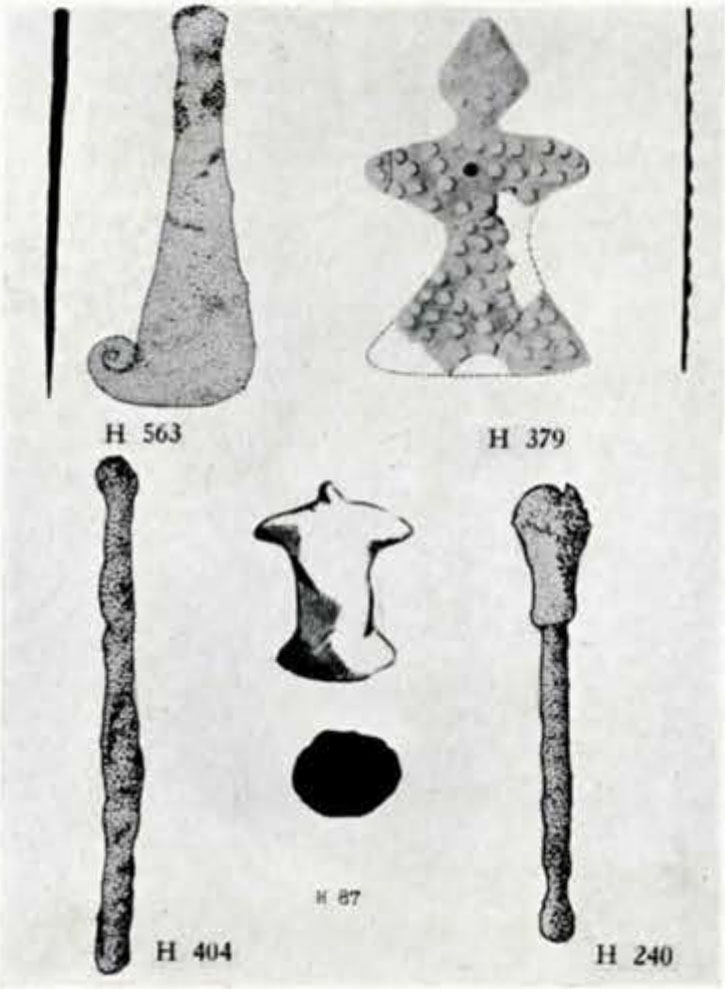
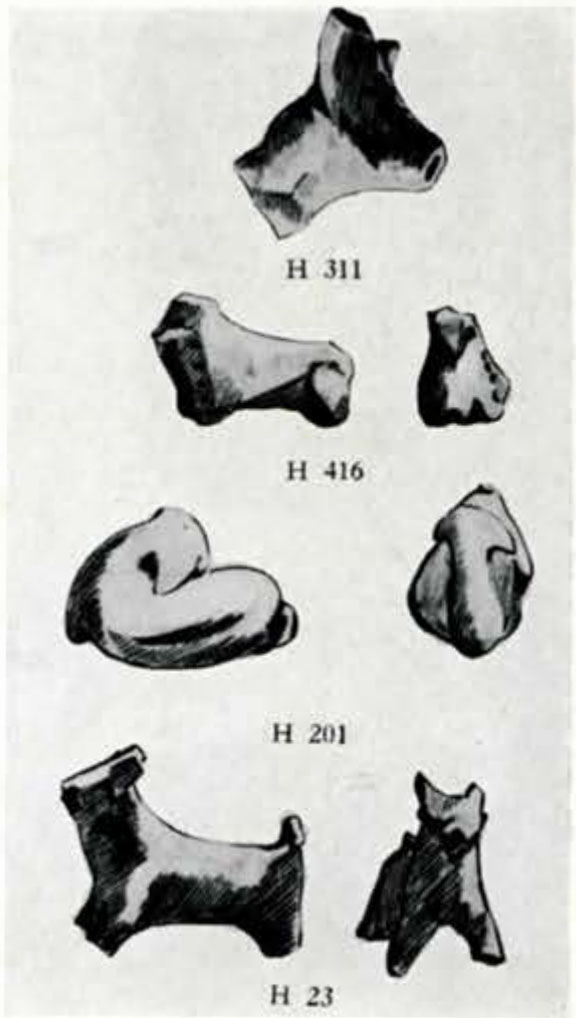
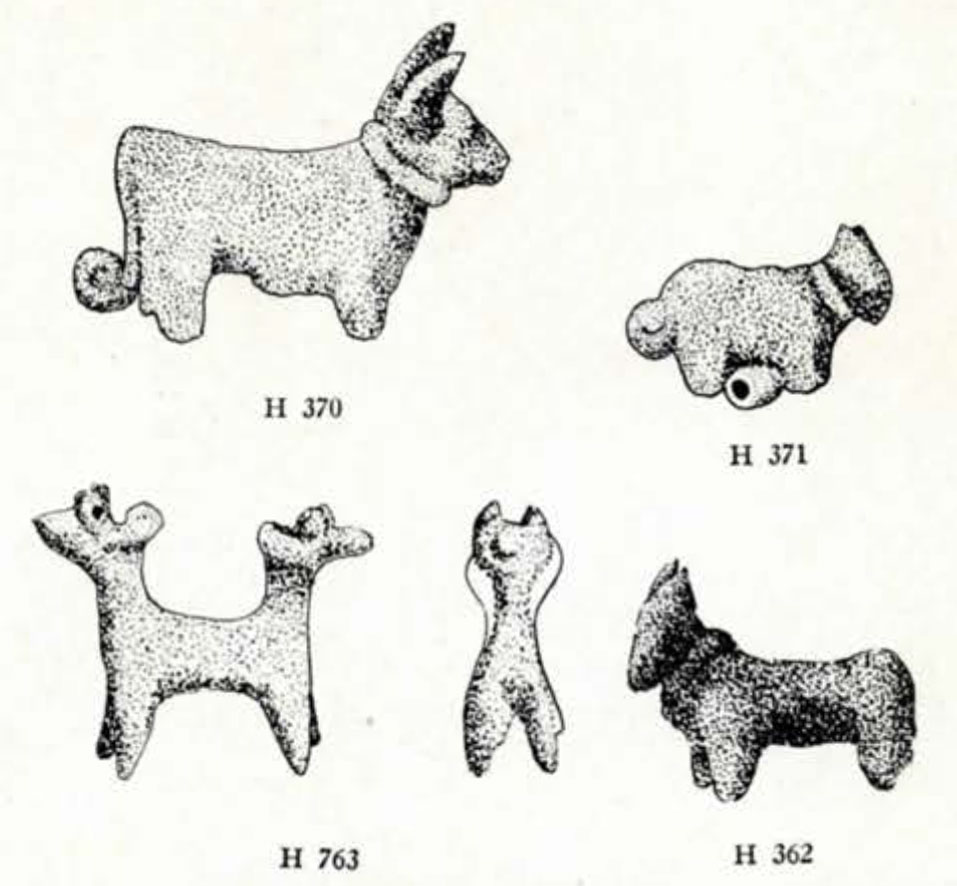
The Necropolis of Hissar III [Plate CXLVII]
It is extremely interesting to study the distribution of burials uncovered in eight squares on top of the main mound. There are a hundred and eighty skeletons or skulls (four prominent graves being marked by circles on the map8). The environs of the graves of three outstanding persons, the ‘priest’ (DF 08, x-1), the second warrior (DF 09, x-1), and the little girl (DF 18, x-1), are rather deserted, while the grave of the first warrior (DF 19, x-2) is partly enclosed by a crescent of crowded burials, kept, however, in respectful distance.
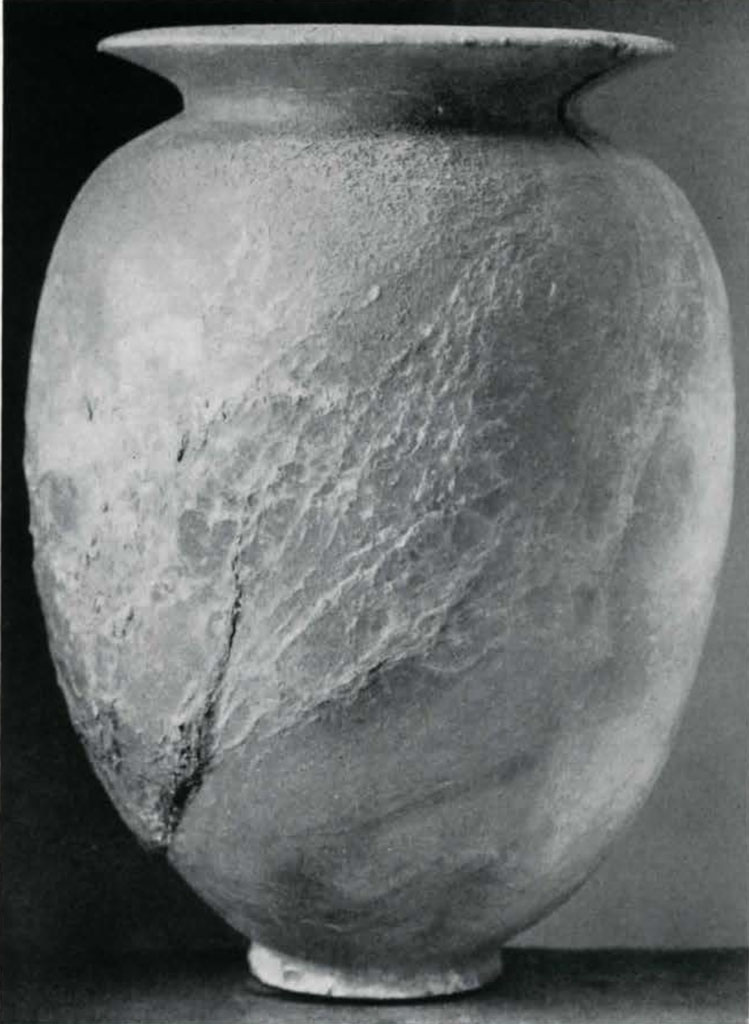
Image Number: 84891
This arrangement suggests definitely that this warrior was a person of high rank or at least highly esteemed by his contemporaries whose loyalty, or desire for some advantage in the other world, induced survivors to bury their dead close to him. This custom is not unique: certain Kurgans, the burial places of many tribal chiefs in general, the Imam Sadeh, that is, graves of the descendants of the Prophet, and the like, present a similar or identical plan of crowded burials around a single grave.
In connection with the warrior’s grave, we must further mention that the rather regular distance kept by the surrounding burials suggests that the central grave had been marked in some manner, either by an enclosure or by a low tumulus, though we found no traces thereof.
There is another highly important point on the plan of the Hissar III cemetery. In the northeast corner of Plot DG 00 [Plate CLI], the remains of ten persons were found within a small area. Most bones of the skeletons were disturbed and mixed up, but quite a few sections of vertebral columns, arms or legs, pelvic bones and femora, were still articulated. There is hardly a doubt that these persons had been disposed of in a communal pit, not immediately, but prior to total decomposition. In Plot DG 96 the remains of twelve persons were found under the same conditions. Archaeological criteria attribute these mass burials and most graves of the necropolis to the last phase of Period III, that is, to the uppermost occupational level (la), which has for the larger part disappeared. While recording the burials, we noticed frequently that during the interment of these persons walls of the lower level (1) had been disturbed, a fact which also becomes obvious when the survey of the necropolis is superimposed on the plan of the architectural remains of Level 1. We noticed, further, that by far the greater number of those burials grouped inside enclosures of Level 1 lay above the floors. We may mention at this point that the sequence of deposits in all sections of the mound was thoroughly disturbed by numerous burials of the upper occupations dug into the underlying levels.
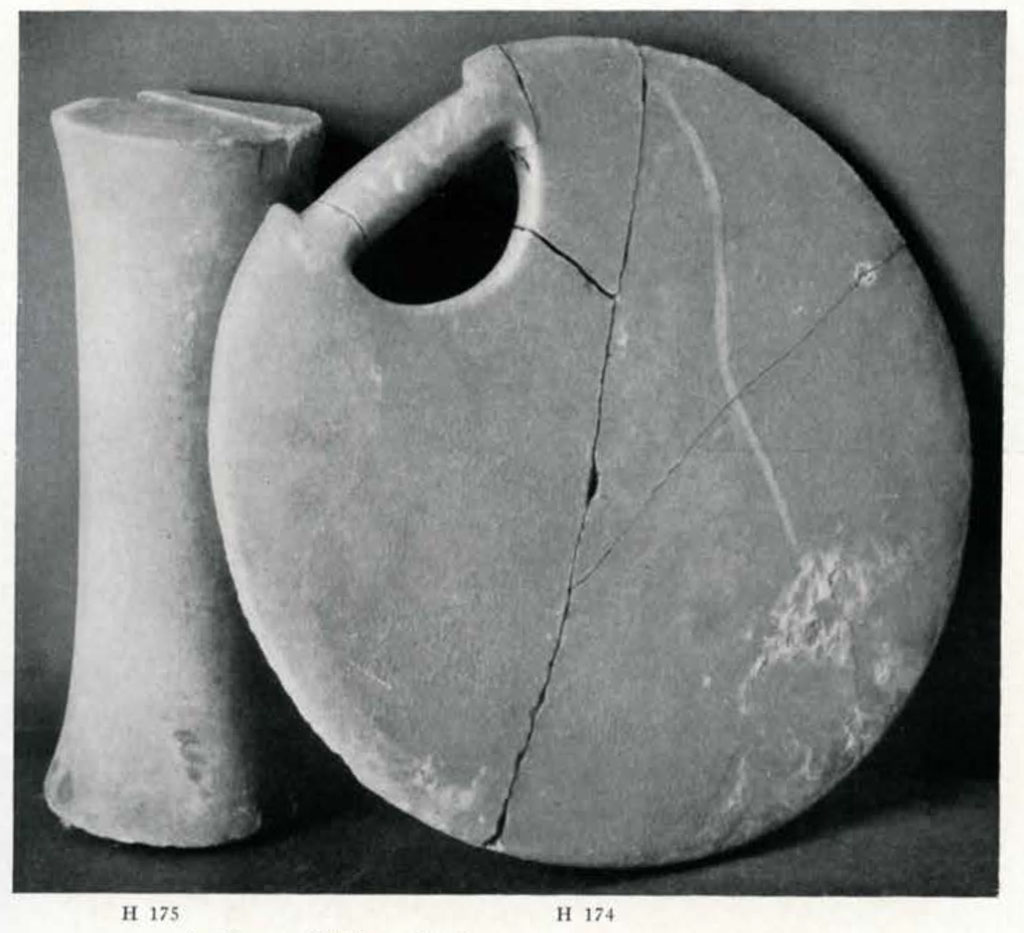
Image Numbers: 153572, 153573
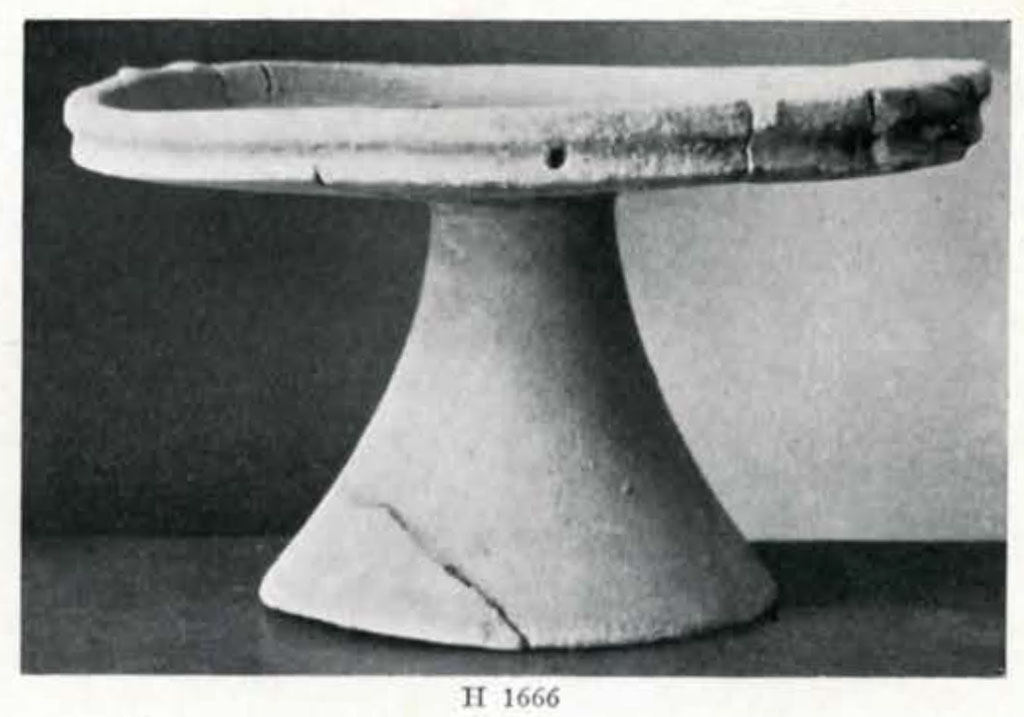
Image Number: 84901
We shall first consider the Hissar III burials in general and refer below to the graves of prominent persons. The schematic drawings show Plate CXLIX ] that there is no rule as to position except the usual contracting of the legs. Bodies and heads lie laterally on either side, dorsally or ventrally. The arms and hands are in voluntary positions, and the mortuary gifts are deposited at will, without preferring particular parts of the body. In none of the prehistoric burial groups did we notice a definite rule concerning the orientation of the bodies, while present Mohammedans bury their dead extended in a northwest-southeast direction, the head being northwest and looking southwest towards Mecca.
The Hissar III people were buried, as their predecessors, below the floors of their houses or at least below the level of the occupied area, but the above mentioned cemetery placed around a single grave shows a custom not noticed so far, with the earlier people. Plain earth burials are the rule. Mud brick cists seldom occur. Traces of matting or fabric are preserved in some cases on and below the skeleton as in the earlier graves, too.
The mortuary equipment consists of all varieties of pottery vessels except large storage pots and braziers. Personal ornaments, particularly strings of beads, are usually more elaborate, but rarer, than during the preceding periods, though we cannot yet distinguish between the copper bracelets decorating the dead of Periods II or III. Within the scope of this report, we can only sketch the four best equipped and most important burials of Stratum III. In the complete, final report to follow, they will he dealt with in detail in the same manner as all other finds. Many of the important objects obtained in these four graves were above described in the chapters on the individual categories of Hissar III finds, and therefore they are merely listed below.
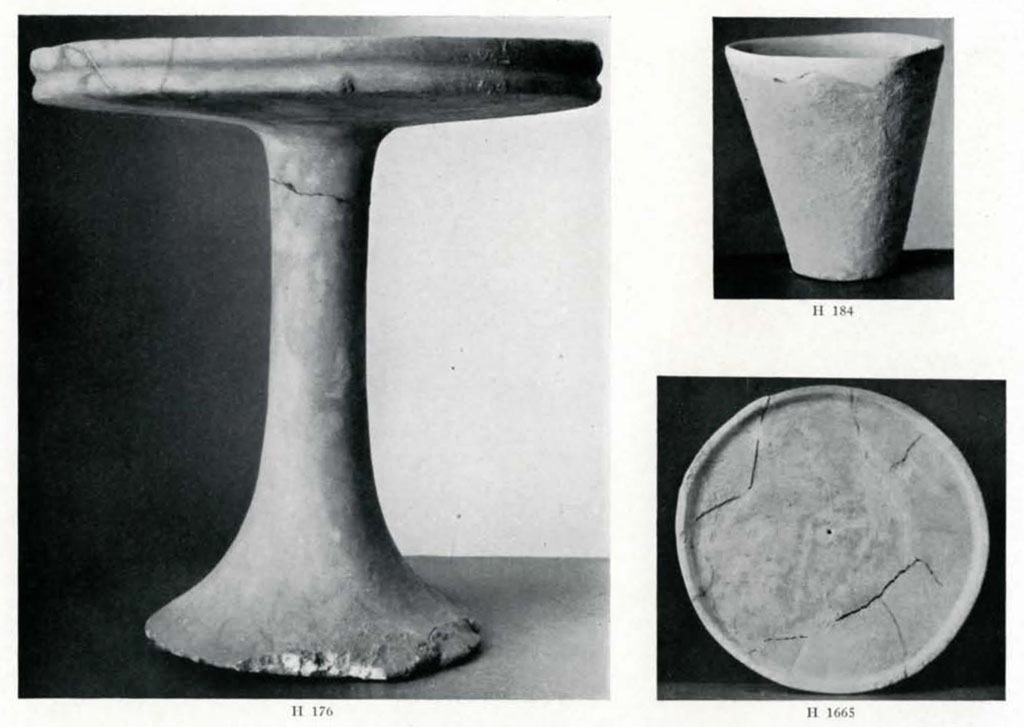
Image Number: 83221, 83222, 83225
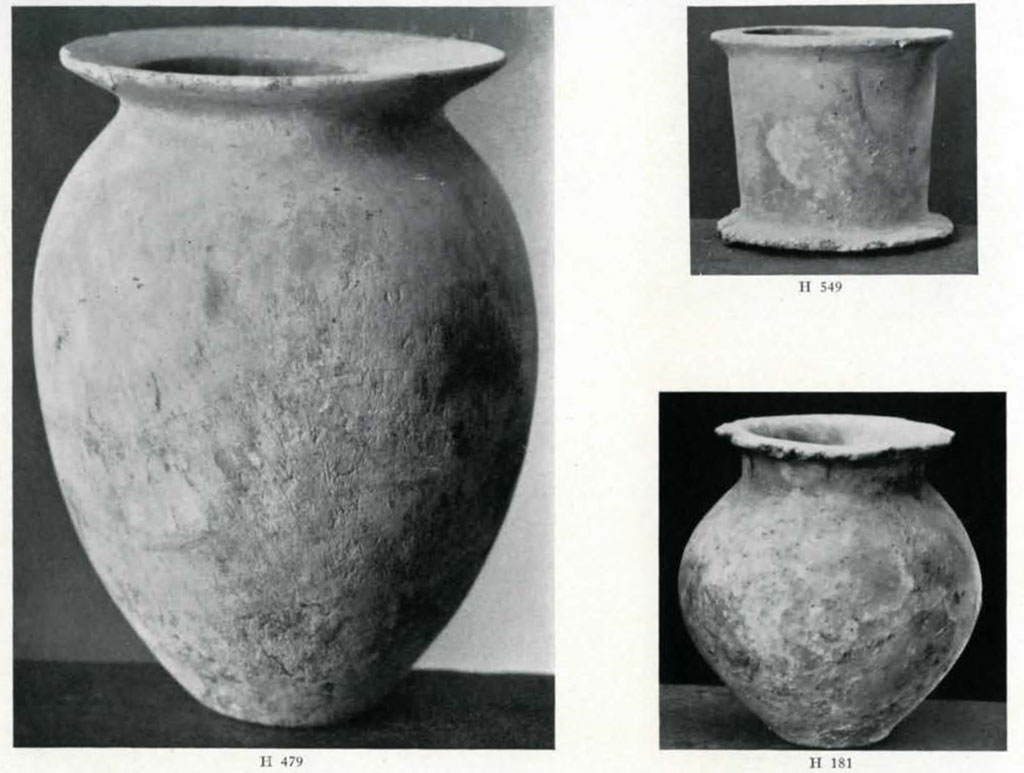
Image Number: 84879, 84887
The first warrior [ (DF 19, x-2), Plates CLII and CLIII], apparently
the most important person whose remains we found, had a smaller mortuary equipment than the others to be considered, but some of his objects are not matched by any other finds. A fine silver pitcher, gray pottery vessels, and an alabaster jar with discoid rim and base were beyond his head. A copper wand (H I70) with birds or with animal heads was thrust into a small pottery jar. In front of his head and body lay a splendid bident, a dagger, or large knife, a mattock, efficient for war and peace, and a hollow chisel. A helmet ( ?) of copper, with lead fragments inside and outside, lay inverted at the feet, while a beautiful, shield-shaped, alabaster disk and a ‘pedestal’ of alabaster were in front of the knees. Chalcedony, lapis lazuli beads and others [H 180, Plate CXLVI] were spread about at the right arm and chest, together with two gold-sheathed, copper earrings.

Image Number: 84666, 153423, 84881, 153425, 84896
The second warrior [(DF 09, x-1), Plate CLII and CLIII] was far more martially equipped. A whole group of bundled-up weapons extended parallel to the right side of the ventrally disposed body. There was a ‘killed’ copper bident, a dagger, and a lance head of copper and a great number of chalcedony arrow points, formerly attached to shafts of wood still traceable for a length of .45. Beside and above the weapons lay copper bowls, an alabaster bowl, a small hollow chisel, the decayed remains of whose handle were traced in continuation of the tool, that is, the handle was oriented in the same manner as the chisel. Six series of little alabaster and clay animal effigies, described in the chapter on figurines, were spread beside and among the weapons, and a small double-headed ram of copper lay on top of the skeleton of a small quadruped, perhaps a sheep, doubtless buried with the warrior. A second group of gifts extended from head to foot of the skeleton. There were cups, and a jar of alabaster, a pottery lid leaning against the jar. Gold-sheathed copper rings once ornamented the ears. A large copper bowl was crushed by the weight of the body lying on top. It contained strings of beads, an alabaster cup, a copper seal and a wand of copper ending in a double-headed animal. A splendid copper mace head lay above. Another copper vessel and a ‘killed’ copper ladle, copper spear heads, and an alabaster cup were on and beside pelvis and feet.
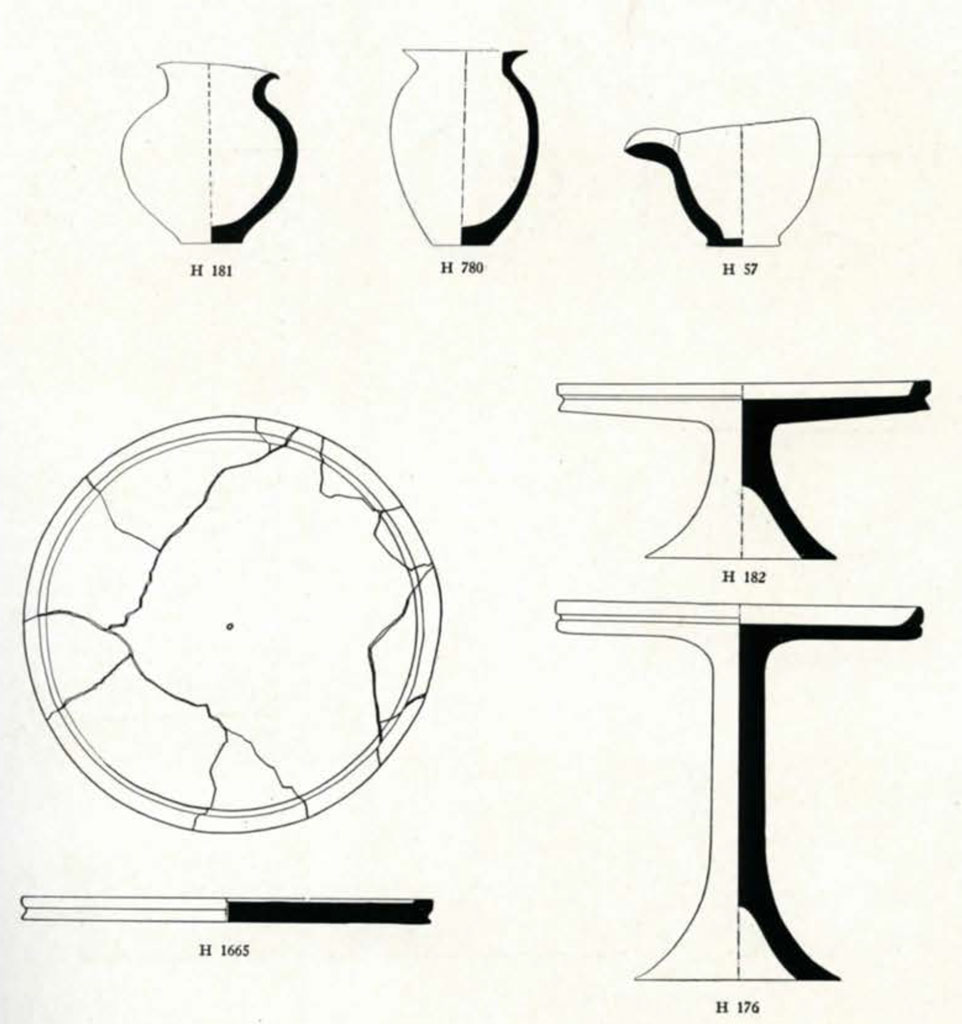
The so-called ‘priest’ [(DF 08, x-1), Plate CLII and CLIV] was virtually covered by his mortuary equipment, and in addition some device, or several objects of perishable material, seems to have covered the grave, judging by four large copper nails, oriented about alike, and separated from the skeleton and the equipment by a thin layer of dirt.
Bowls and a trident-ladle of copper, alabaster jars, cups, a plate, and a lead cup, in addition to a typical Hissar III canteen of gray ware cover the likewise ventrally disposed skeleton from the pelvis to the chest, and lie behind the neck and the head. Beads and pendants once combined to form a necklace; a belt, loose strings, and perhaps beaded fabric were described in the chapter on ornaments. They are scattered over the neck, back and pelvis, and virtually form lumps within the bracelets and beside the various objects deposited at the right arm and hand. The latter group includes, further, a plain alabaster cup, a black and red, incrusted alabaster jar, copper objects such as seals, a wand, a crushed cup, and a little bottle, perhaps the pedestal for the adjacent wand. Small, single or double-headed rams of serpentine also belong to this group.
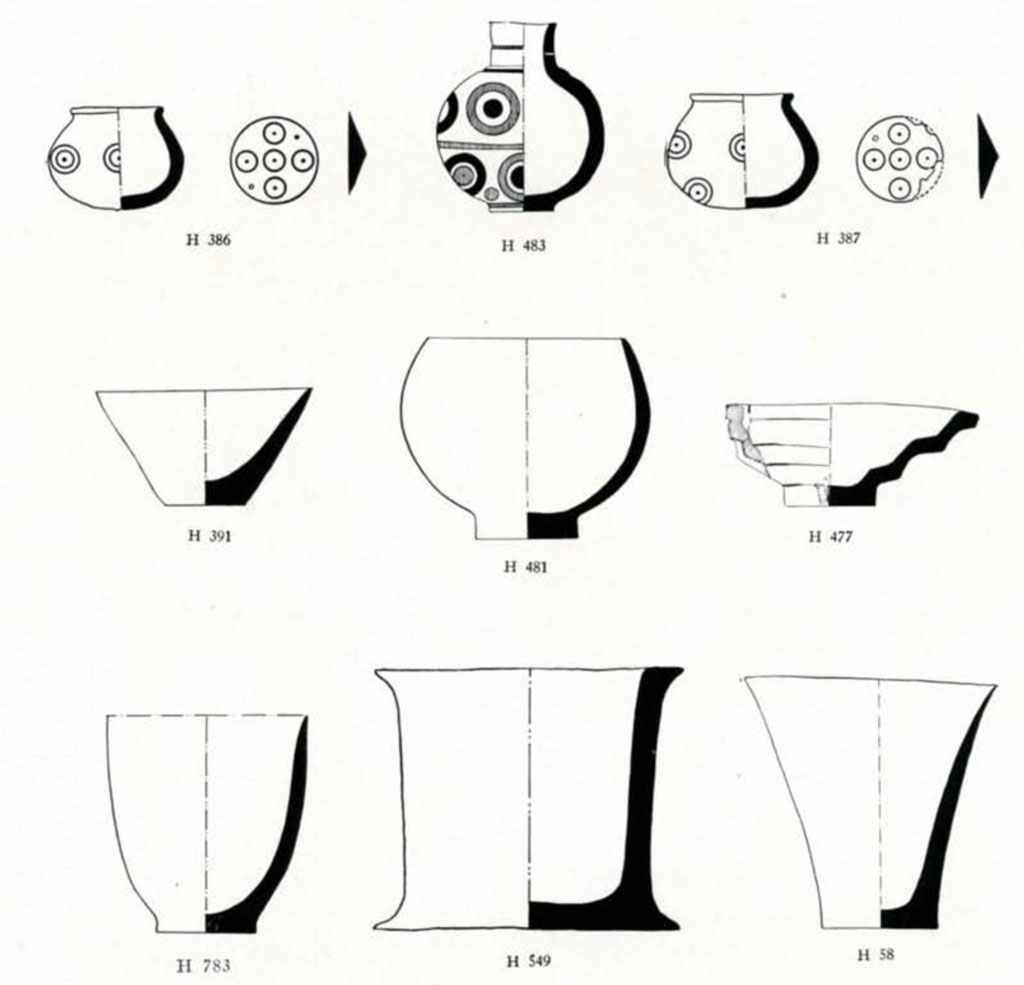
The last objects to be considered include a diorite pestle, situated somewhat above and apart, but probably belonging to the burial; further, the interesting copper disk once ornamented with some floral matter, and leaning against the right posterior part of the skull; and, finally, a large female effigy of alabaster partly covered by the right pelvic bone.
There remains the grave of the little girl [(DF 18, x-1), Plates CLII and CLV], frequently referred to in the chapters on Hissar III finds. The child, not more than five to seven years old, had an extraordinary number of gifts. It is understood without saying that her equipment is not in proportion to any personal qualities or achievements. Neither is it proportionate to the child’s age. There can hardly be a doubt that the mortuary equipment is that of an adult woman, as the reader may judge for himself. Thus the quantity and the quality of the gifts permit three important conclusions. First of all, since personal accomplishments are out of the question, the child’s equipment reflects the wealth and there-with presumably the elevated status of her family. Further, since the mortuary gifts are characteristic of a woman, the child must have been a girl, a fact not determinable by means of the undeveloped bones. Going a step further, the lavish equipment of the little girl suggests that the position of a girl child and consequently that of a woman was considerably more enjoyable and important in prehistoric Iran than during more recent times. Finally, the mortuary equipment of a grown-up woman in a little girl’s grave proves almost beyond a doubt that the Hissar III people believed the child would grow up in the life thereafter, and use the pottery jars and copper bowls, which were much too large and heavy for the little fingers. There seems to be just one flaw in this conclusion: the large vessels may have been meant for servants to attend to the child in the Other World, but were these servitors to be adorned with the strings of large chalcedony and lapis beads weighing so heavily on the little girl’s neck and shoulders?
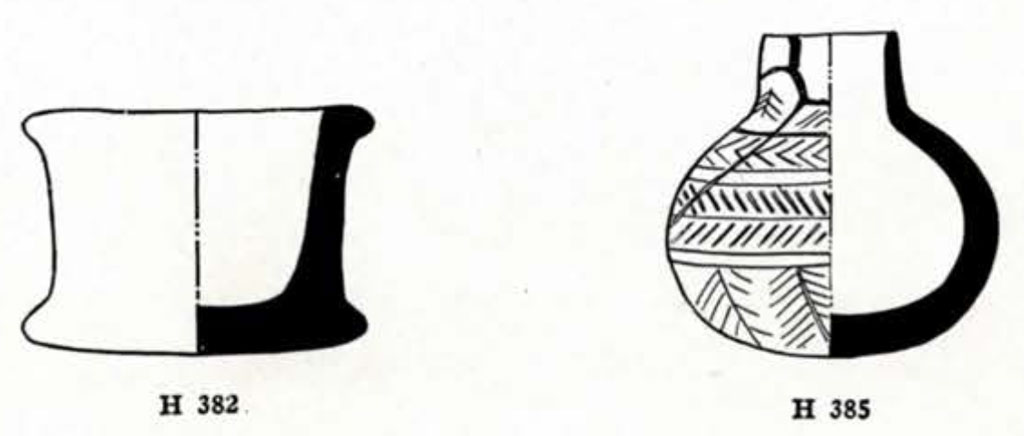
Six small cups and pitchers of silver were grouped around the little girl’s head and chest. A large, beautiful chalcedony pendant and an interchanging gold and lapis lazuli bead, in addition to a conical alabaster ‘button’ had partly dropped into the silver cup in front of the forehead. At the cup was also a stippled silver pendant in form of the stereotyped female effigy of Hissar III. Beads of chalcedony, lapis lazuli, carnelian and limestone, including a large shell pendant, encircled the neck. A gold-covered, copper earring was at the left clavicle, and frit and alabaster beads lay massed on the chest. In front of the latter a copper wand with a ram as head, a little cow, a sheep of silver and two silver pins had been deposited. Spread about behind the back of the little girl were four cups and jars of alabaster, a cup or bowl of attractive green stone, two almost identical ‘cosmetic jars’ of alabaster with incised and black incrusted centered rings, two cups and a little jar of incised frit. Then followed larger vessels, pottery jars and bowls, a lead cup and two big copper bowls, one inverted and covering a flat copper spoon or stirrer. Black incrusted bone pins and a copper point conclude the little girl’s equipment for the Other World.
In concluding this section, we want to mention that we noticed definitely Mongoloid features in several skulls, while the bulk of the Hissar III population apparently belonged to the Caucasian race. Again, detailed anthropological studies of the voluminous skeletal material preserved and dispatched to the United States will give us accurate information about the racial characteristics of those people.
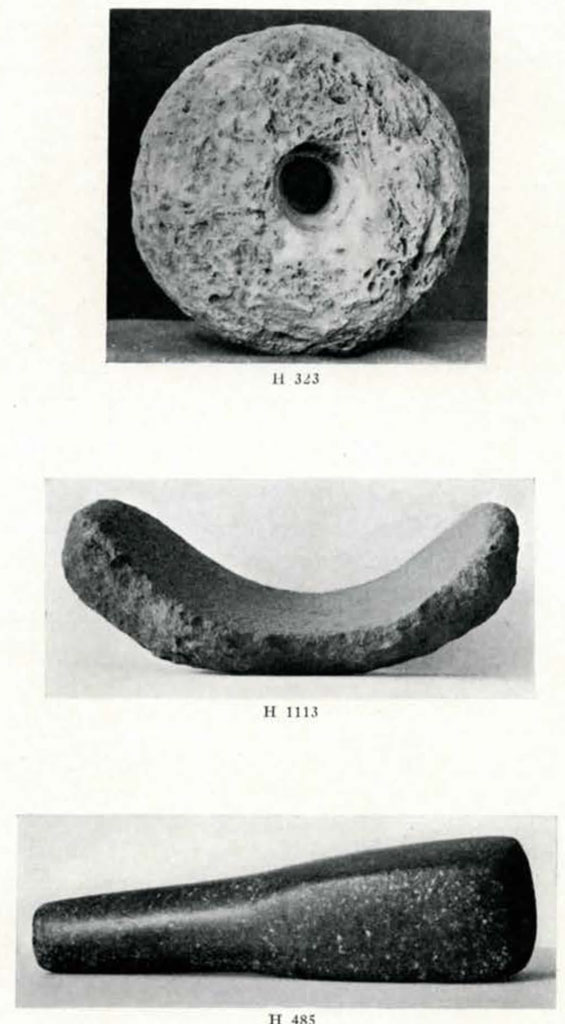
The End of Period III
The end of the period of greatest achievements coincides at Tepe Hissar with the desertion of the site, about three and a half millennia before our days. About two millennia after the last settlers of Hissar III had left or had died, the Sasanians built a palace on the peripheral remains of the ancient towns but the main elevations were never again occupied.
We cannot help interpreting at least one cause of the end by means of the crowded cemetery on top of the main bill and by the communal burials there and elsewhere. We found no traces of war or conquest by foreign people. There were no burned buildings like those of Level 2 which actually seem to have been destroyed in that manner. The fire-reddened East Hill we attribute to this earlier, burned layer of Stratum III. The top remains on the main hill and elsewhere showed the drab, normal mud brick shades. Further, if many people should have been killed in battle, we would have found a few, at least, with bones—particularly skulls—injured by blows. We found no marks of this kind. As a result of continued drought and famine we would expect an unusually large percentage of burials of children and old persons, while the strong and healthy would have emigrated. There were many child burials of the last Tepe Hissar occupation, but their percentage appears normal for early times and the proportion of skeletons of old persons is, as usual, rather low. Thus we have for the present only one theory for the apparently abrupt end of Hissar III. We assume that a severe epidemic struck the last community, wiping out a large number of people, and finally driving away those that were left, after they had buried their own dead and the remains of others. We are certain that settlements of mediaeval Europe showed similar scenes during the times of the Black Death.
Whether or not this theory is correct, at any rate human occupation stopped at Tepe Hissar when it had reached a climax of accomplishments. Archaeology will have to search farther afield to fill the immense gap of two millennia and to determine the culture history of the region from the last Hissar III settlers to the Sasanians, and on, until the thread is tied with present Damghan, which first appeared in history during early Islamic times.
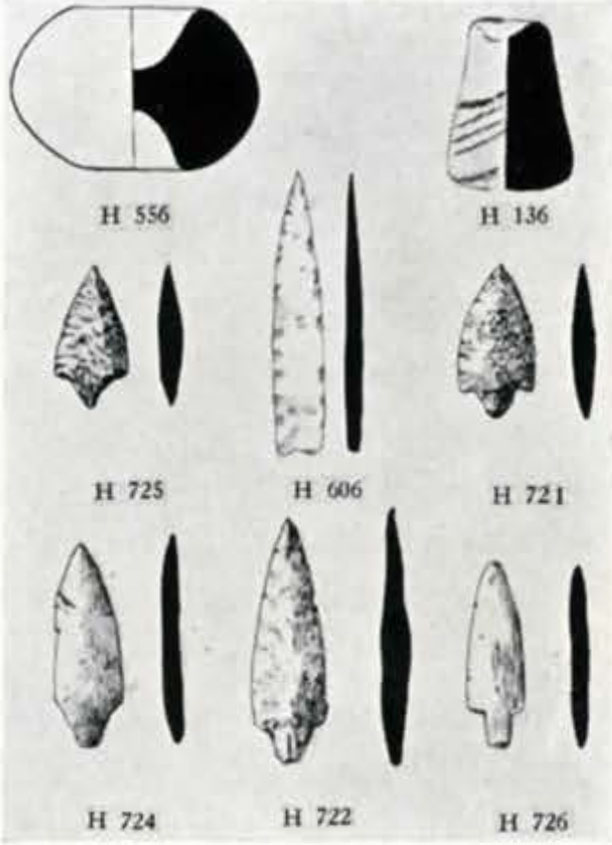
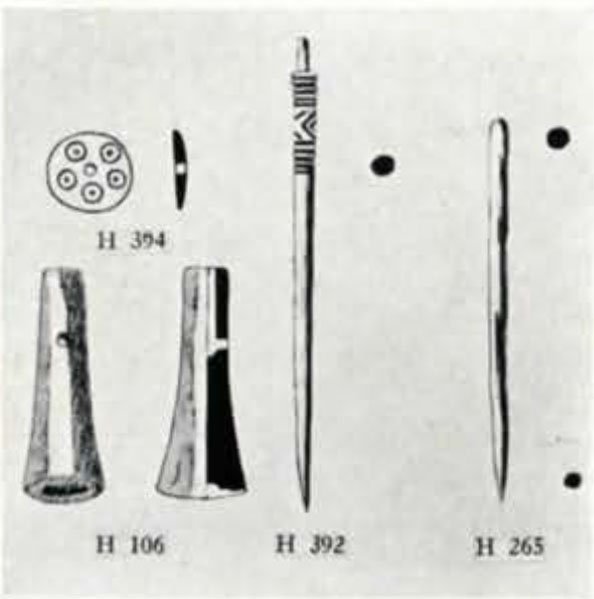
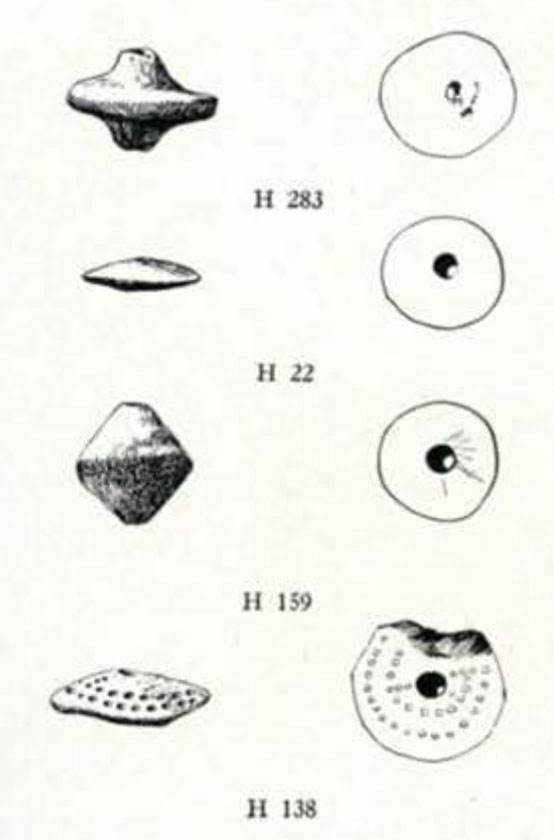
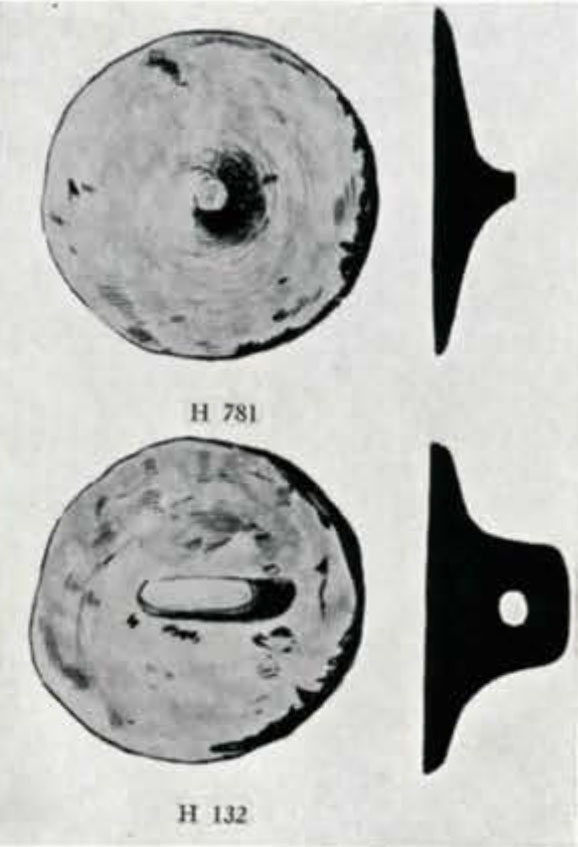
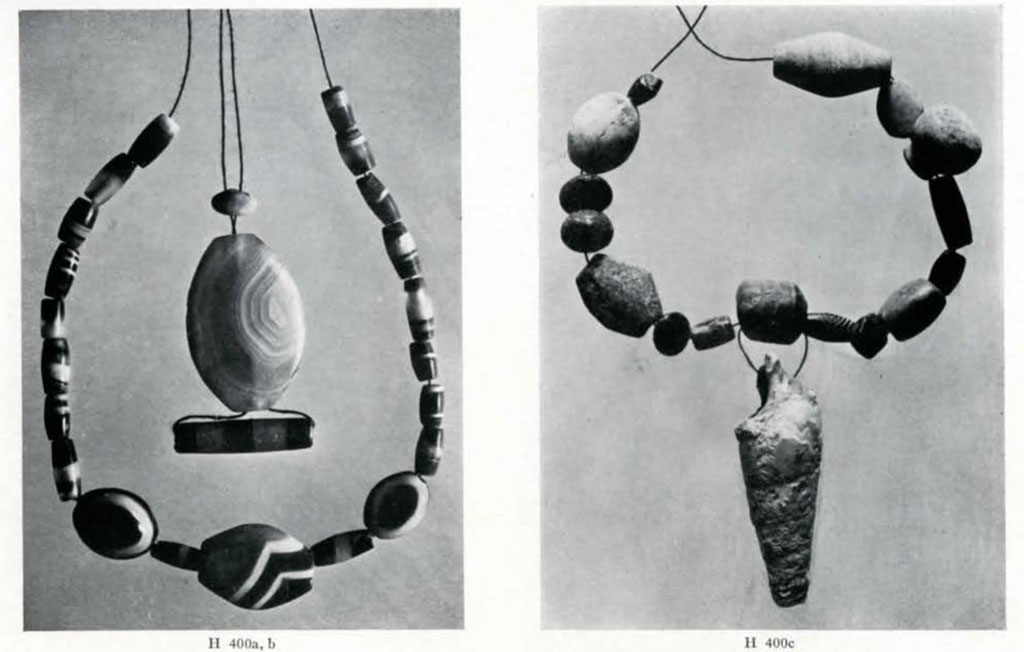
Image Number: 84793-94796
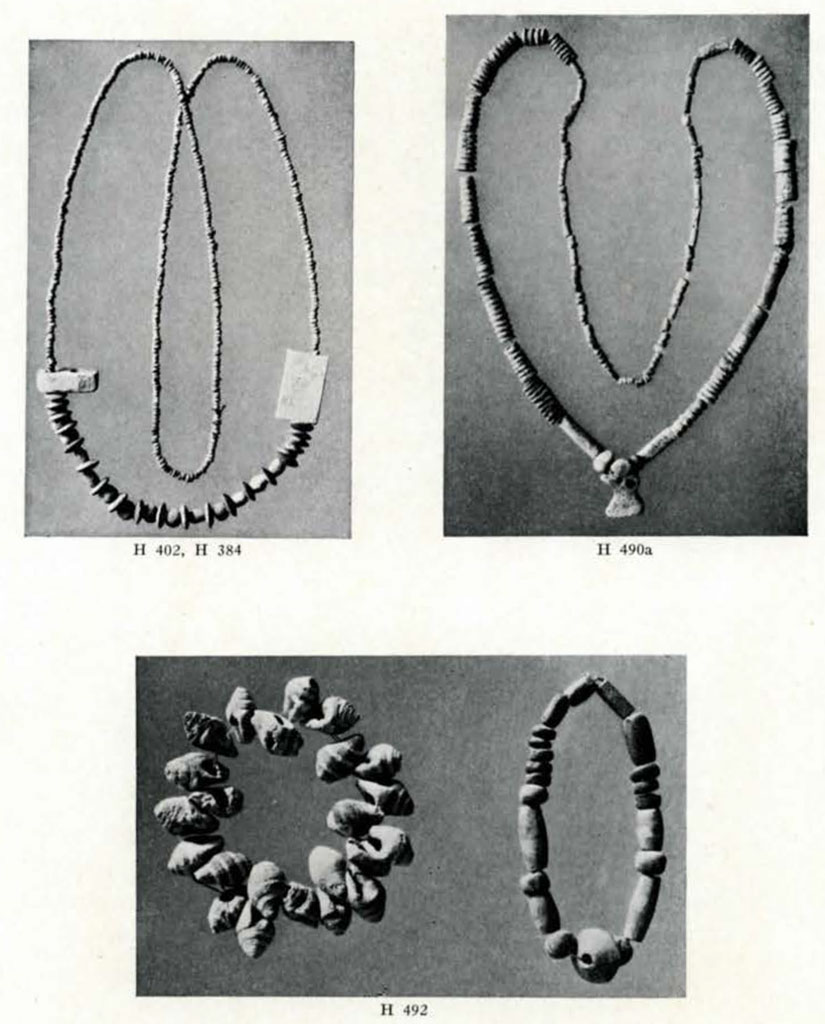

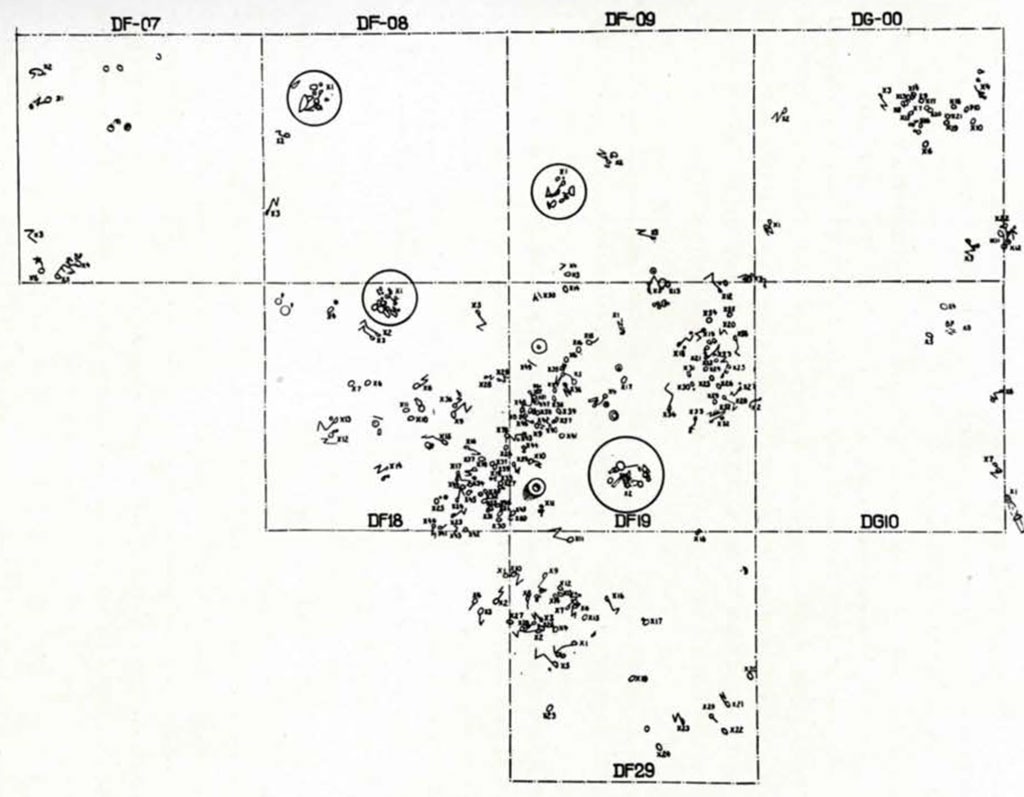
Image Number: 82674
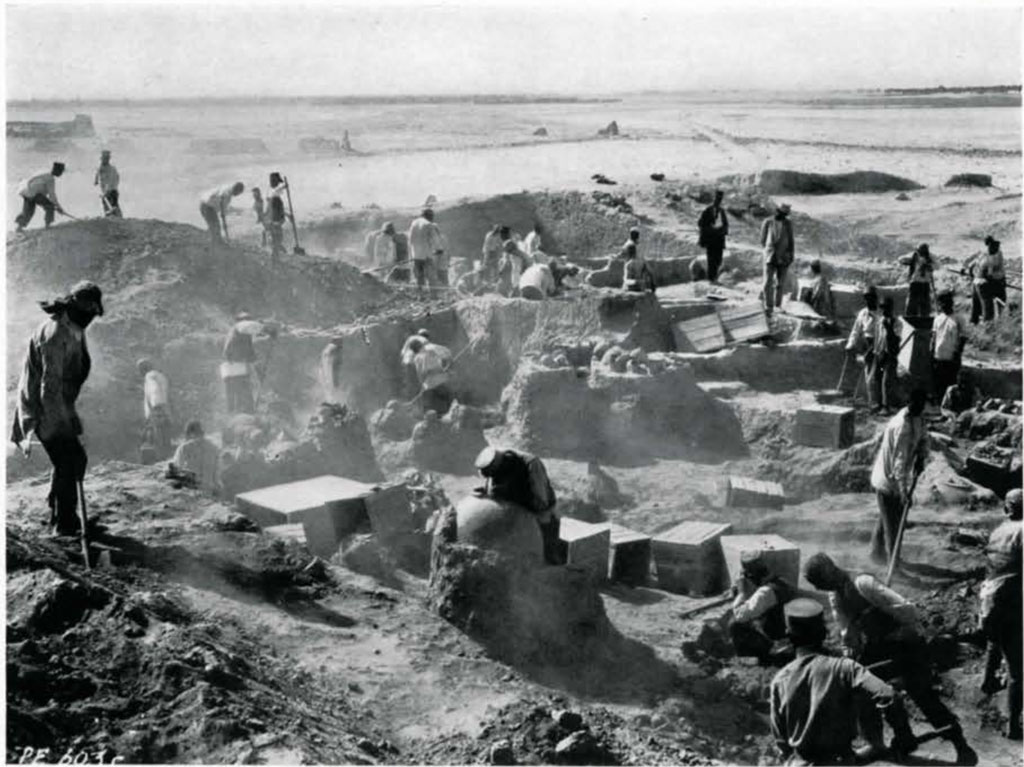

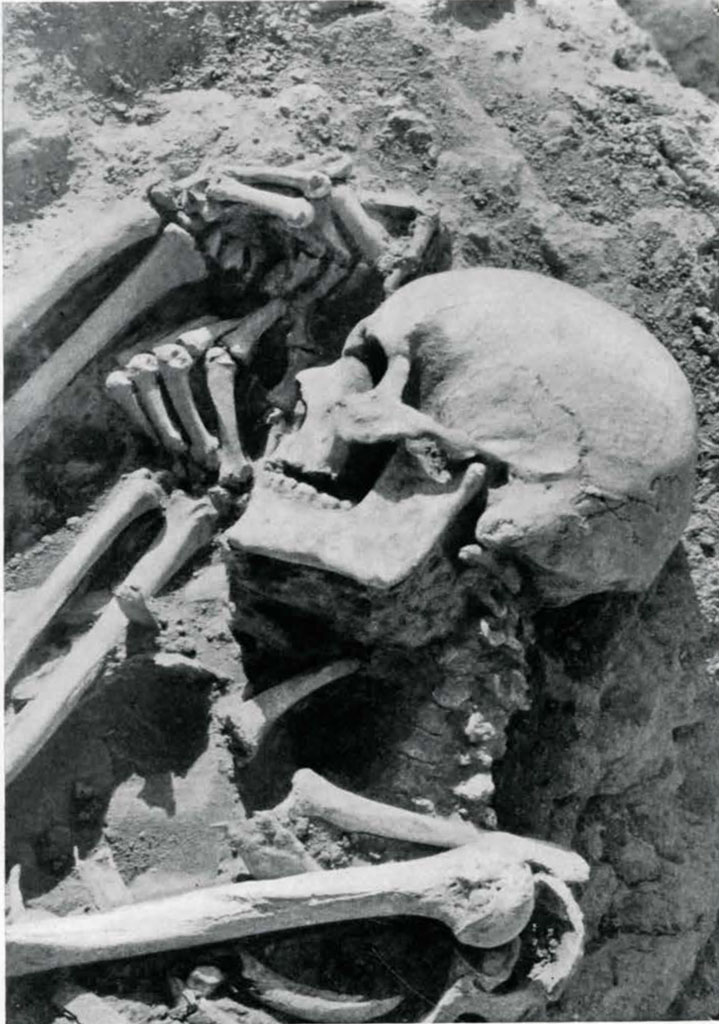
Image Number: 21862
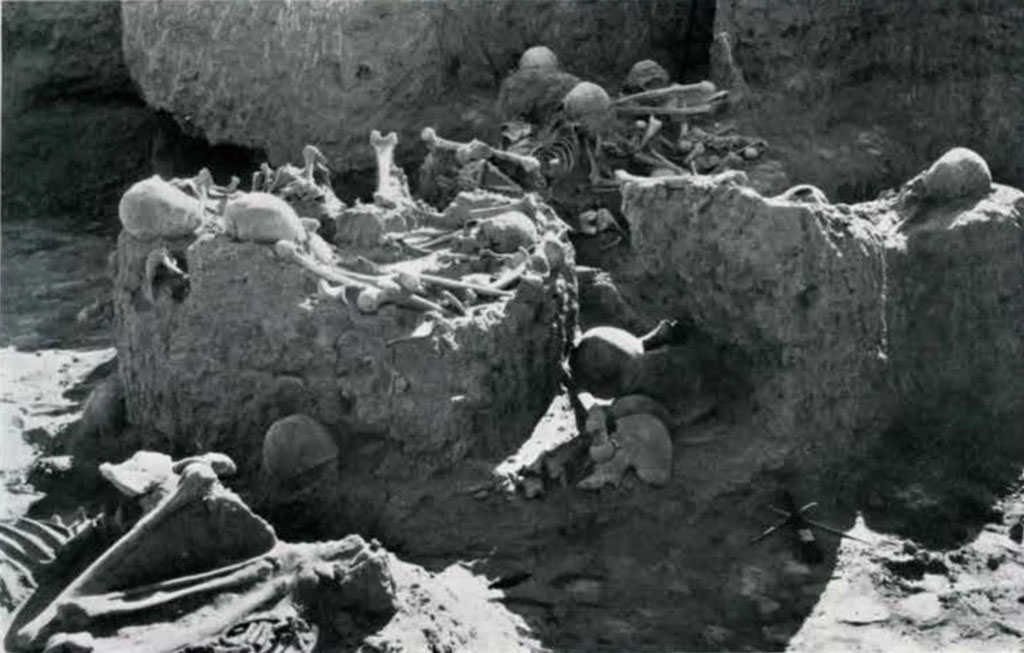
Image Number: 82990
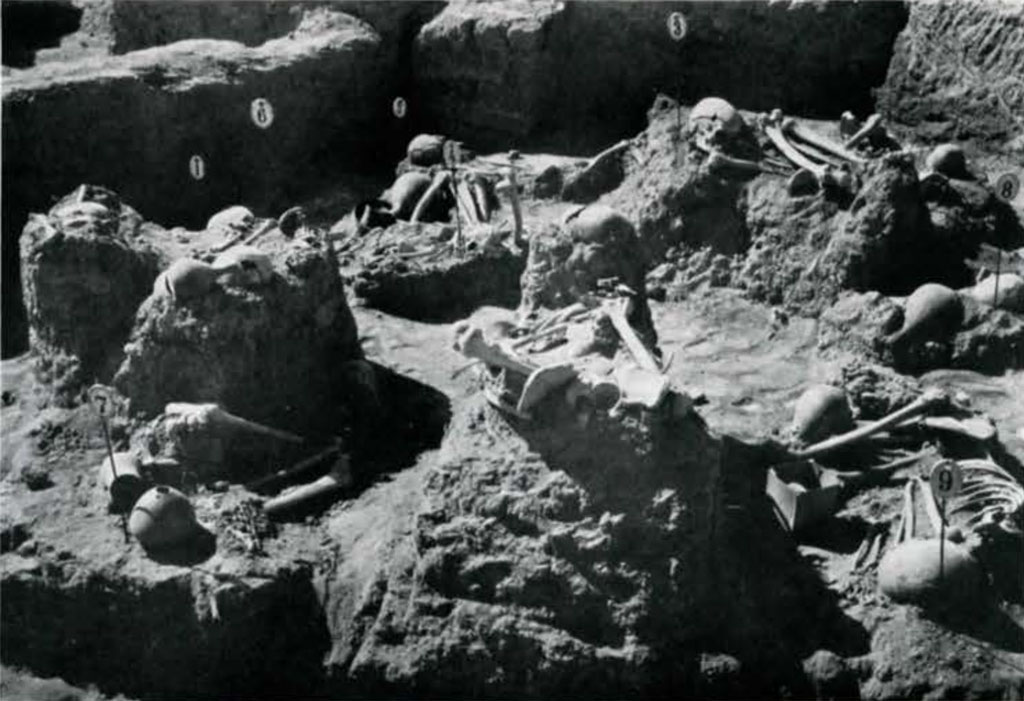
Image Number: 83008


Image Number: 82681

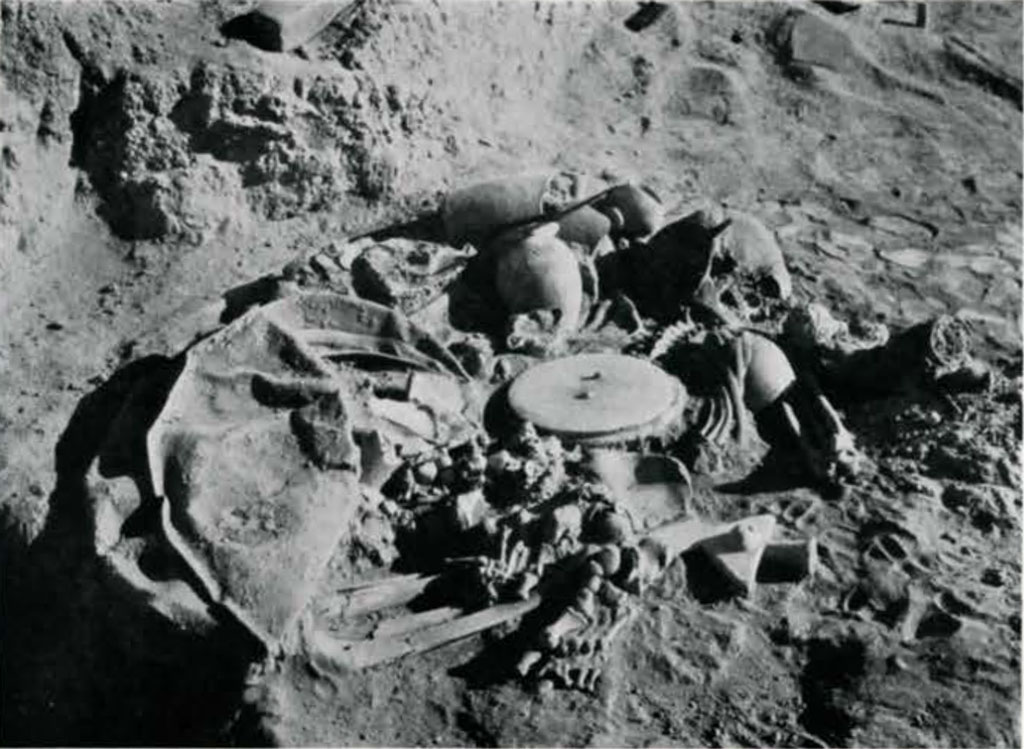
Image Numbers: 82886, 82887, 82888

Image Number: 82889
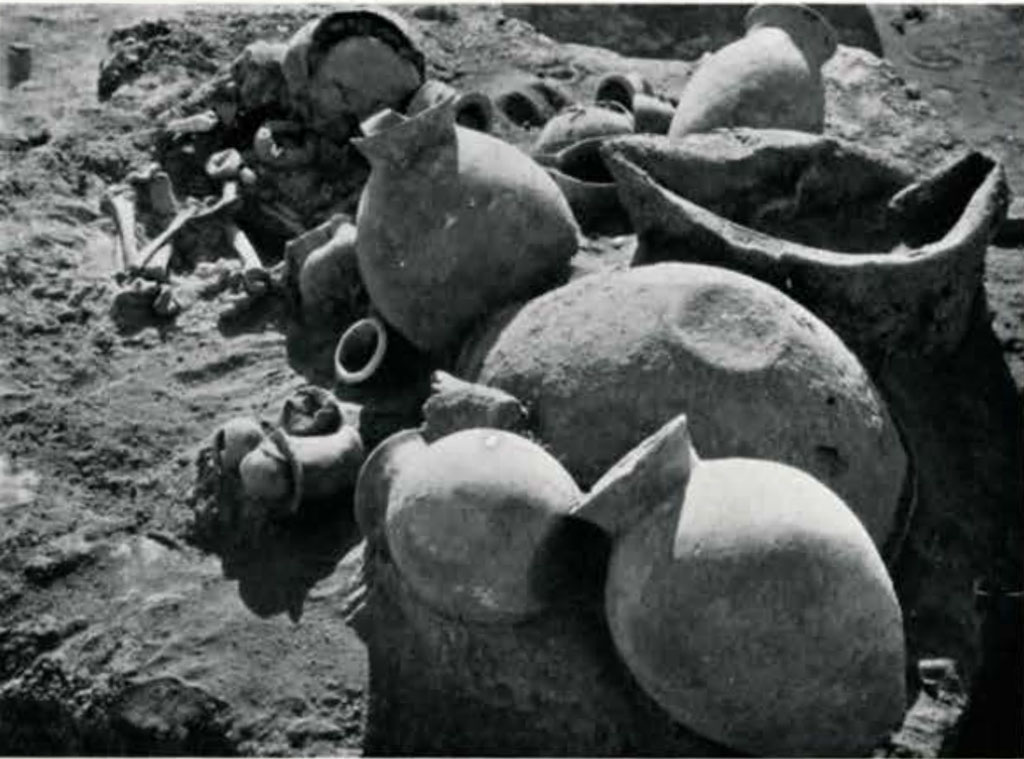
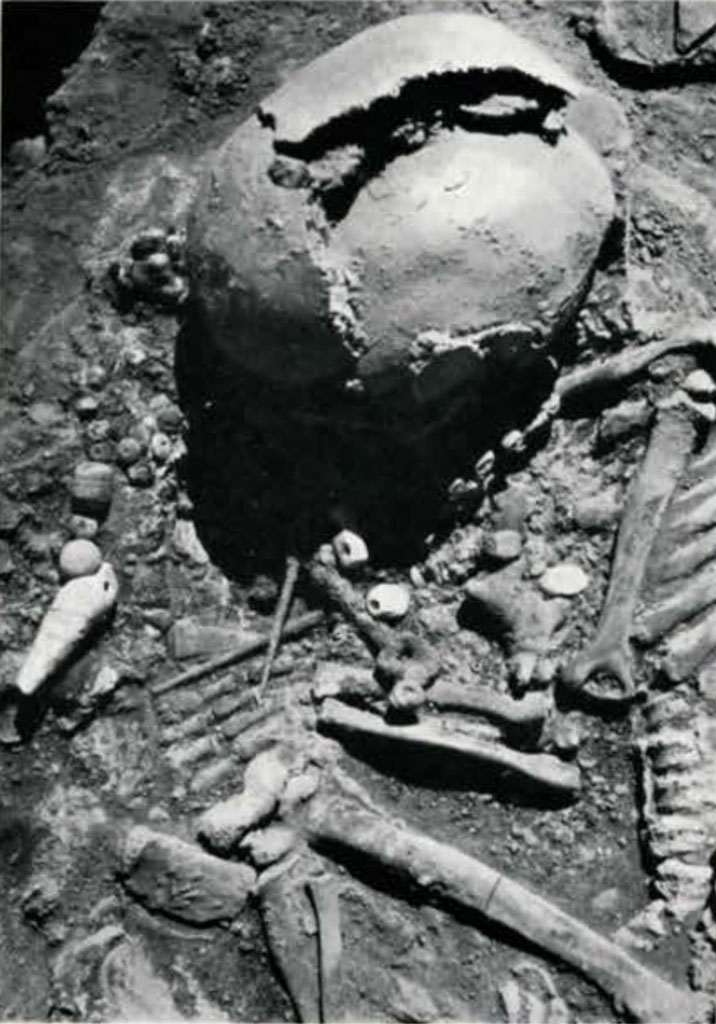
8 The skeletons are numbered within their findplot, e.g., DF 18, and designated by xn ↪

